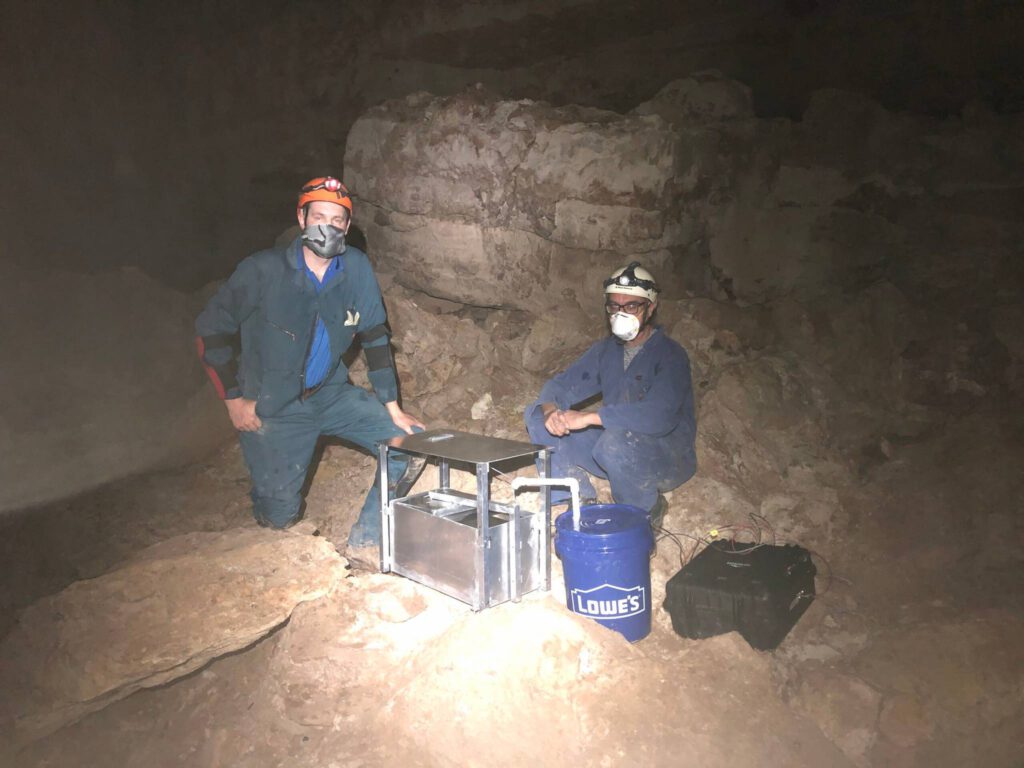Grant Information
NCKRI Grants Overview
In 2019, NCKRI initiated three new grant programs designed to facilitate and support cave and karst research at academic and research institutions across the United States.
NCKRI’s research grant program is managed by Dr. Daniel Jones. For additional information on the application process, please visit: https://www.nmt.edu/research/organizations/nckri.php
Information on recent awards is found below:
NCKRI Seed Grants
The NCKRI National Seed Grant Program is designed to enable investigators to initiate novel cave and karst research as well as encourage new principal investigators to enter the field.
2024
Dr. Jeffrey S. Munroe, Middlebury College, USA, and Dr. Gabriella Koltai, University of Innsbruck, Austria
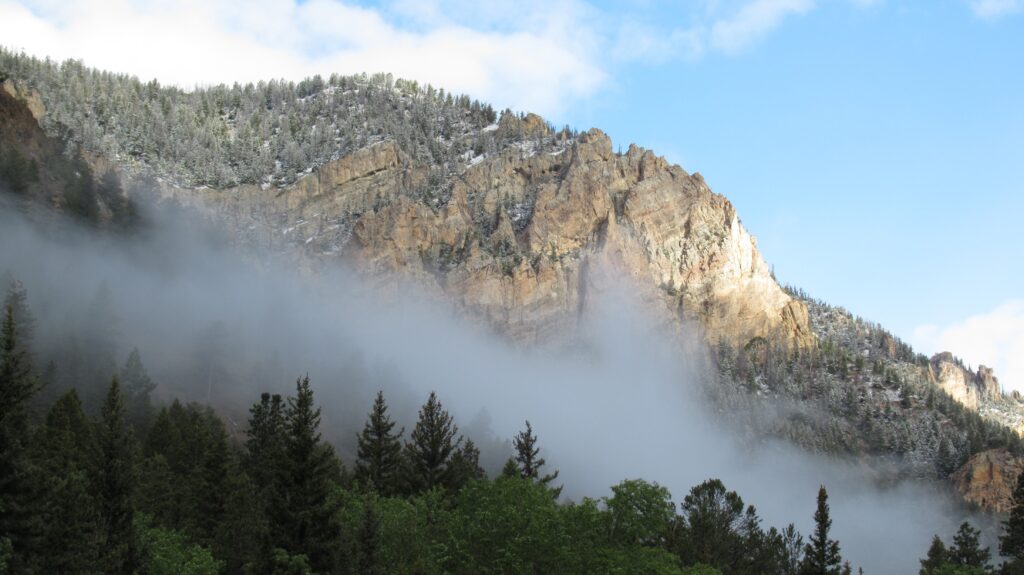
Exploring the Potential of Cosmogenic Burial Dating to Constrain Rates of River Incision and Landscape Evolution in the Uinta Mountains, Utah
Reconstructing how rivers cut canyons into bedrock is key to understanding the interplay between tectonics and long-term landscape evolution. As rivers erode downward, the local water table also drops, leaving caves that were formerly occupied by water isolated above the new river level. Water-transported sediments stranded within these caves can be dated to determine when the river dropped below the cave elevation, permitting calculation of river erosion rates. This project will employ this approach to reconstruct patterns and rates of river erosion in the Uinta Mountains of northern Utah, a location with abundant caves where numerous questions remain about rates of canyon development and landscape evolution. In addition, our team will include a professional photographer who will document our research and the visual wonders of the studied caves for a public exhibition.
Sarah Arpin, University of Kentucky
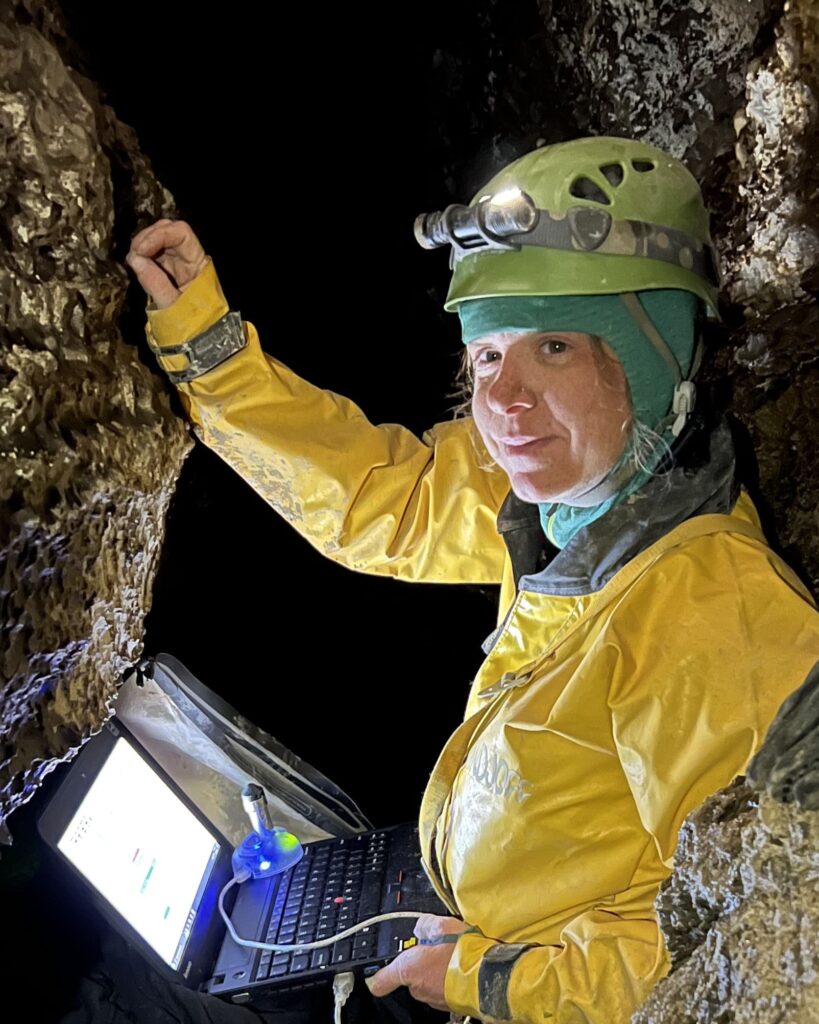
Sediment Transport Dynamics in a Complex Fluviokarst System, South-central Kentucky
Sediment is the most common contaminant of rivers and streams. Sediment also serves as a vehicle for transporting other harmful contaminants and pollutants through our waterways. In cave and karst areas, where groundwater and surface water are highly interconnected, understanding sediment movement is key to understanding the vulnerability of our aquifers. To quantify sediment movement, however, studies usually rely on measurements of sediment in the water (suspended load) and complex calculations rooted in fluid dynamics. In this study, we equip multiple sites within a small karst watershed in Mammoth Cave National Park to continuously monitor both suspended sediment and sediment that rolls or bounces along the streambed (bedload) over time. Our goal is to quantify current sediment movement at different locations along the flow path, including both surface and subsurface segments, and to identify the primary forces driving sediment movement. Weather patterns and changes in land use can result in a dramatic increase in sediment transport. This study sets a baseline that can be used to help manage future issues such as water quality decline, damage to ecosystems, and increased flood risks.
2023
Dr. Jut Wynne, Northern Arizona University and Mr. Kuenzang Dorji, Ugyen Wangchuck Institute for Conservation and Environmental Research, Bhutan
First Study to Examine Cave-dwelling Animal Communities in Bhutan
Dr. Wynne and Mr. Dorji are co-leading the first study to document and characterize Bhutan’s cave biodiversity. While some work on bats has been undertaken, the wholesale examination of cave ecosystems remains largely uncharted territory within the country. Overall, the significance of their research lies in filling the knowledge gap concerning cave ecosystems in Bhutan. Specifically, the research team will systematically: (1) identify cave-roosting bats via mist-netting and recording ultrasonic calls; (2) collect (and likely subsequently describe) subterranean-adapted taxa; and (3) document the frequency of cave use by tigers, leopards, Asiatic black bears, sloth bears, grey wolves, and primates using trail cameras. Through their efforts, Wynne, Dorji, and their team will gather data on cave-dwelling communities and their diversity, heighten awareness about the importance of cave biodiversity, characterize cave use by bats, other wildlife, and arthropods, and establish monitoring procedures.
Additional team members involved in this project include: Mr. Chris Corben, BatSense, Columbia, Missouri; Dr. Patricia Kambesis, Center for Human GeoEnvironmental Studies, Department of Earth, Environmental, and Atmospheric Sciences, Western Kentucky University, Bowling Green; and Dr. Bruce W. Miller, Wildlife Conservation Society, Bronx, New York.
Dr. Jessica Oster, Vanderbilt University
Fire and carbon in an arid karst landscape
Chemical records from stalagmites can illuminate the relationship between Earth’s surface and wildfire from past intervals of time when the human influence was greatly reduced compared to today. However, open questions remain as to how the chemical fingerprints of fire are transmitted from the surface into the cave and how fire influences soil carbon above the cave. To address these questions, we will initialize a long-term study of the impacts of fire and the timing of recovery in a semi-arid karst landscape through implementing a controlled burn bracketed by monitoring of the soil microbiome, soil and cave gas and organic and inorganic dripwater chemistry. Our site is located in northern Wyoming in the highly threatened sagebrush steppe ecosystem. Understanding the interplay between soil microbial populations, carbon cycling, and fire and how these would be captured in a stalagmite record will improve our ability to reconstruct past fire activity. This knowledge is transferrable to other sagebrush steppe landscapes in the western US which occur across numerous National Parks and public lands.
Dr. Diana E. Northup and Jennifer Hathaway, University of New Mexico
Investigation of Silica Solubilization and Uptake by Cultured Cave Bacteria
Lava caves worldwide have silica deposits that were formed on their cave walls after the cave was formed. Some of these deposits are opal secondary mineral deposits, while others are what we call “ooze”, a soft deposit that is often dominated by silica. Biosignatures, morphologies, chemical composition, etc. that provide evidence of past or present life in silica formations, may be an excellent life detection tool on extraterrestrial bodies. By using similar caves on Earth, we have accessible laboratories for such investigations. While the microbial role in these secondary deposits is hypothesized and supported by bacterial morphologies in silica deposits, the understanding of how specific microorganisms participate in silica secondary mineral formation needs extensive study. Are the microorganisms simply trapped in forming deposits, or are they active players in silica formations? We will investigate the ability of cave bacteria, cultured from lava caves in El Malpais National Monument, in New Mexico, to solubilize silica and/or uptake silica. Establishing if these basic mechanisms can be performed by cave bacteria, then investigating the types of Bacteria and Archaea performing these processes, will lay the foundation for investigating microbial mediated silica formation in caves.

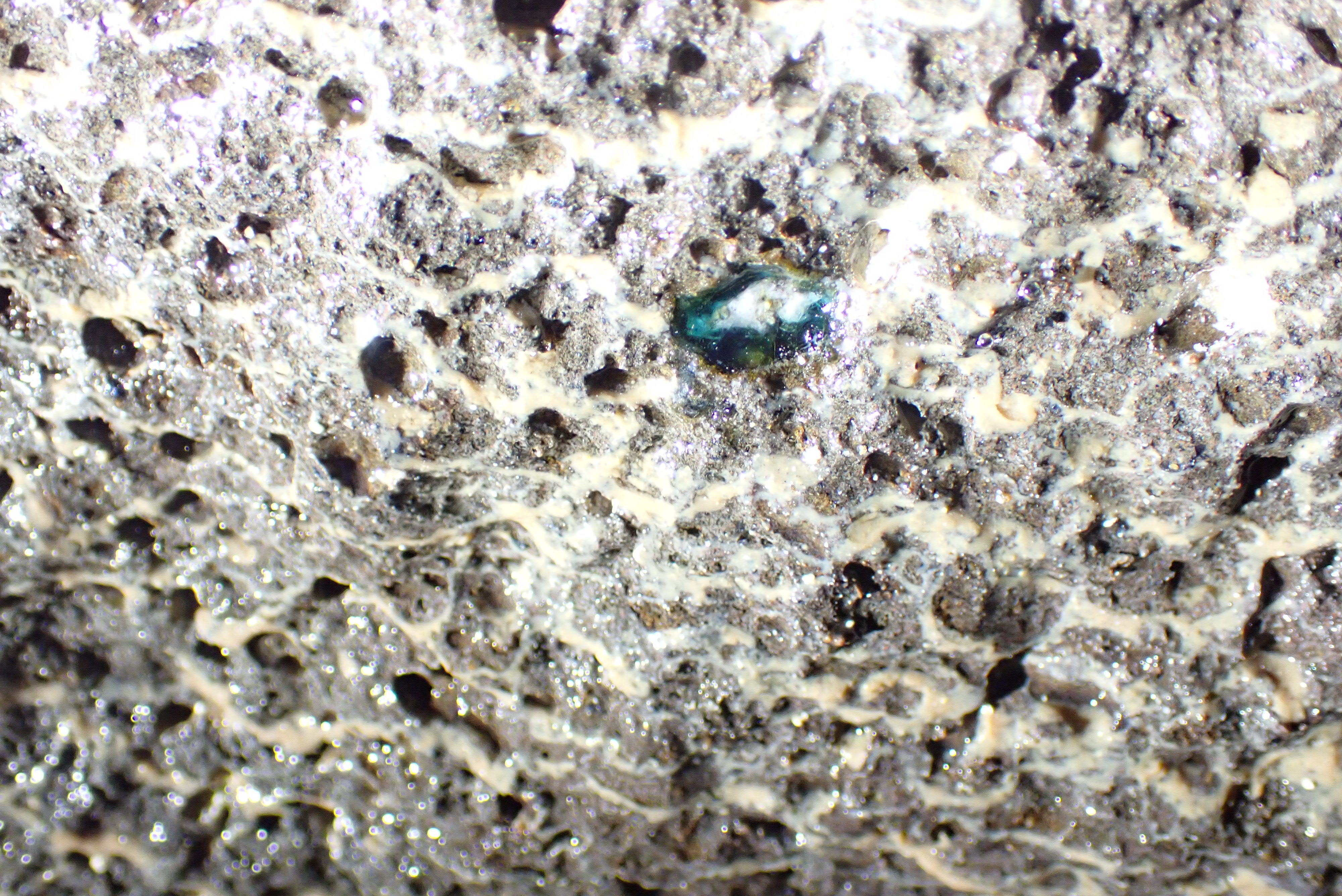
2022
Dr. John R. Spear, Colorado School of Mines
The Shoshone Canyon Conduit Cave: A Greater Yellowstone Ecosystem Sulfur Cave
Five miles west of Cody, Wyoming and ~25 miles east of Yellowstone National Park lies the Shoshone Conduit Cave. Bisecting Cedar Mountain, an irrigation tunnel built by the Bureau of Reclamation (BoR), managed by the Heart Mountain Irrigation District, delivers water from the BoR Buffalo Bill Reservoir to more than 30,000 acres of irrigated lands in and around Cody. During the construction of that tunnel in the late 1940’s, a cave was discovered and the tunnel was made to travel though. The cave is rich in sulfides and sulfur deposits with unique speleothems. In this work, we will conduct a preliminary survey of both the geochemistry and microbiology of this sulfur cave on its speleothems, mineral deposits and waters. To date, this cave has had no such work completed on any kind of science in the cave, though a team of Colorado cavers has been in the cave twice to complete an initial survey. What makes this cave unique and sets it apart is that it is typical limestone dissolution cave that happens to be dominated by sulfur compounds. Elemental sulfur is present in and on everything and the cave has strong sulfide odors that likely emanate from geothermal hot springs in the deep subsurface beneath the cave. Access is highly restricted due to the fact that the irrigation tunnel is running most of the year.
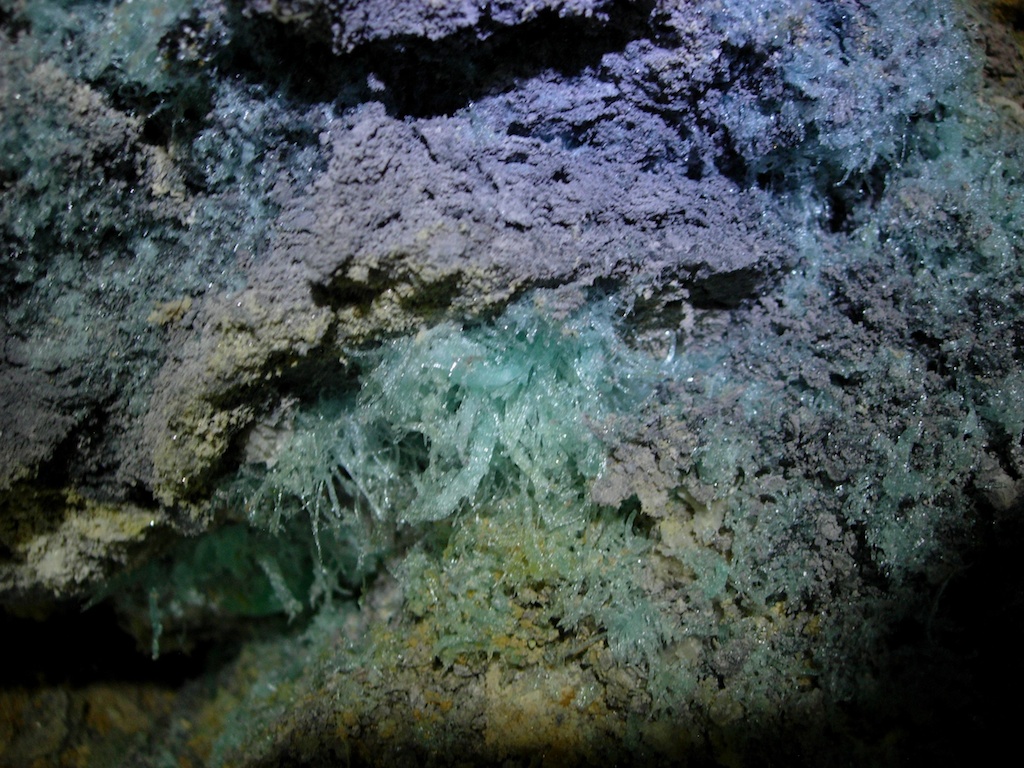
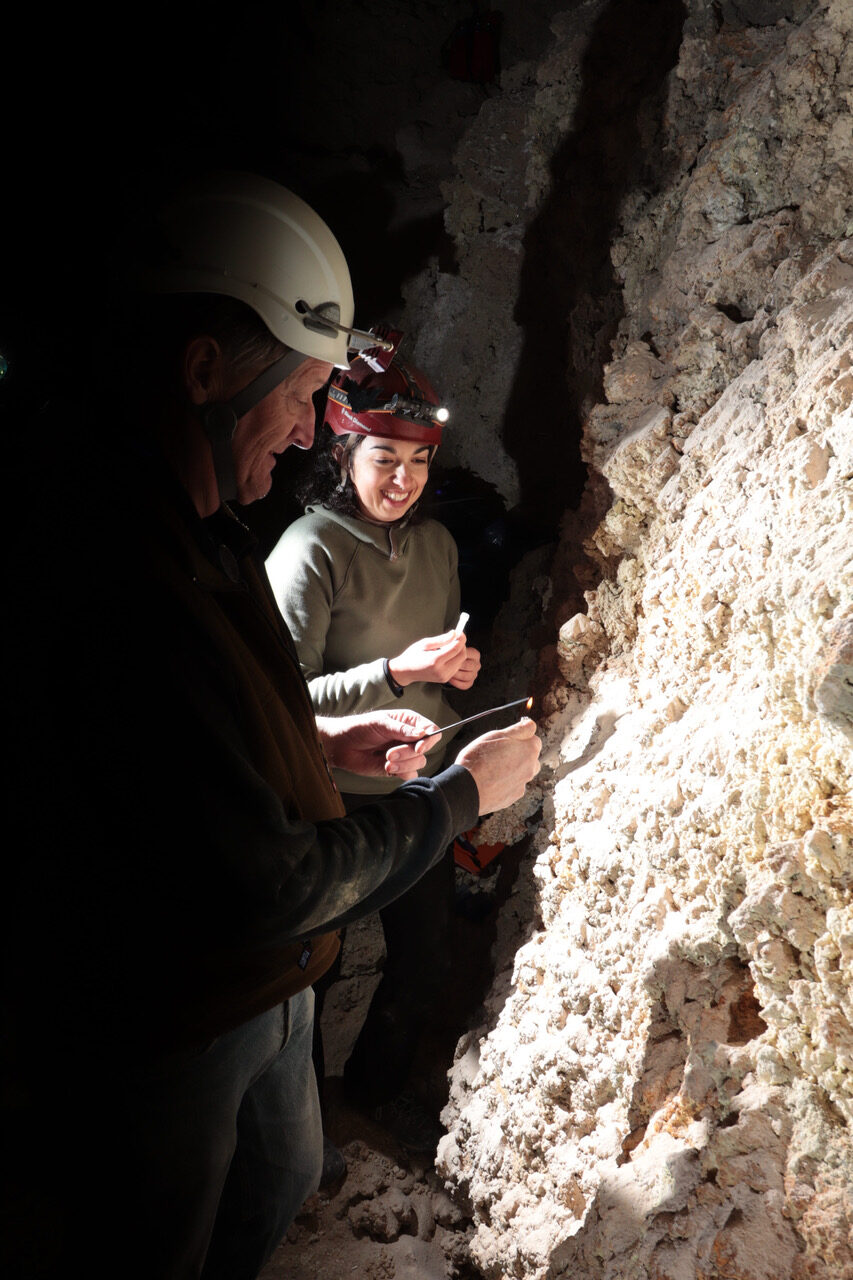
Dr. Chloe Fandel, Carleton College
Developing open-source tools to simulate reactive and non-reactive contaminant transport in karst aquifers
The goal of this project is to improve our ability to simulate how groundwater and contaminants move through karst landscapes. Numerical computer models are powerful simulation tools that allow us to play out various scenarios before they actually happen, so that we can develop wise groundwater protection strategies. However, simulating karst aquifers is significantly more challenging than simulating more common porous aquifers. Numerical modeling in karst is an emerging area of research with many promising new developments, but these are currently somewhat disconnected and the barriers to using them are high.
This study is linked to other ongoing projects by research teams in Minnesota, Switzerland, and Germany, all working on different aspects of groundwater flow and contaminant transport modeling in karst. My team will focus on developing open-source, well-documented, and reproducible example code linking these disconnected projects, with a particular emphasis on creating training materials that can be used by several generations of undergraduate student researchers.
Future work will then build from these resources to investigate three major anthropogenic contaminants: nitrate in agricultural settings, chloride in urban settings, and heat near geothermal wellfields.
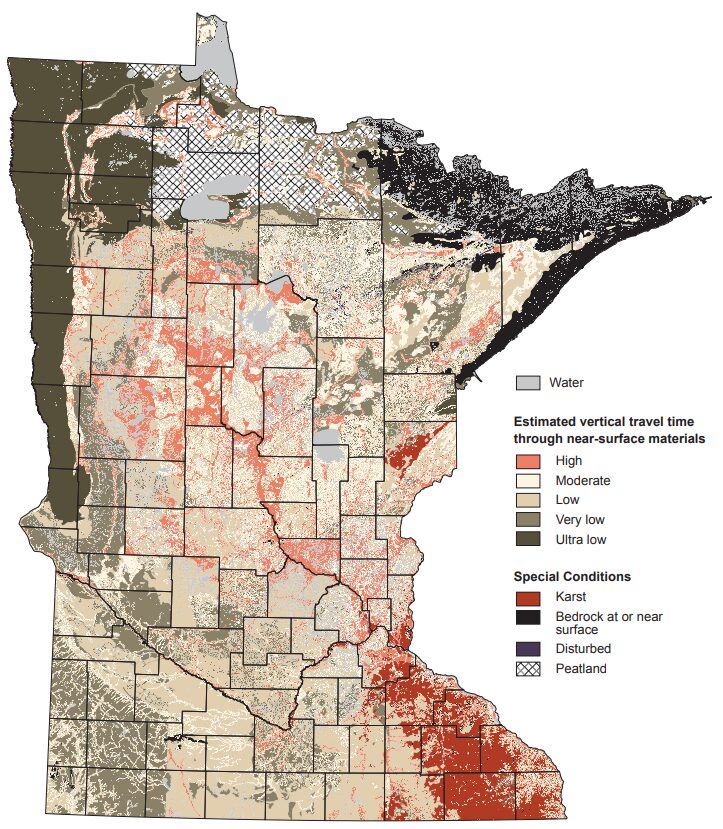
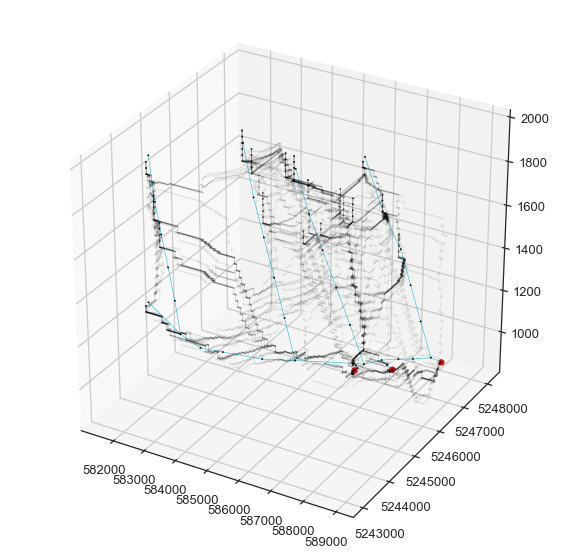
Image on Right: Example of a 3D conduit network simulation, showing a range of possible configurations. This would be one input to a groundwater flow and transport simulation.
2021
Dr. Daniel Ibarra and Dr. Natasha Sekhon, Brown University
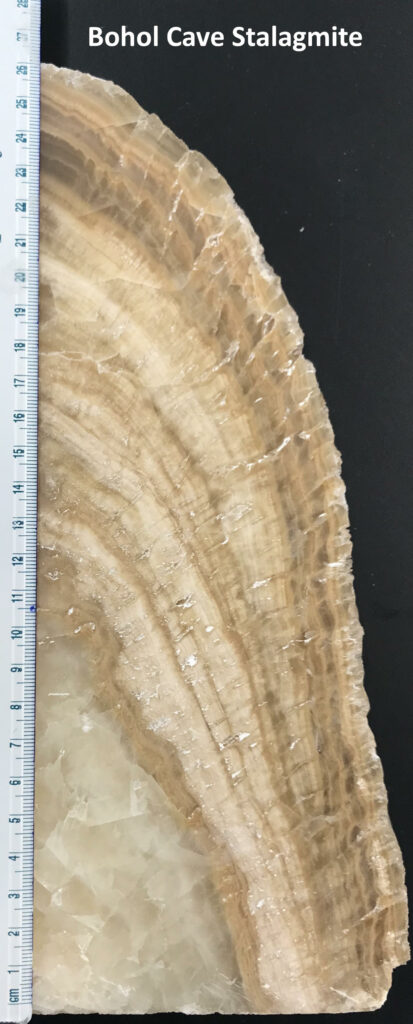
Utilizing Stalagmites from the Philippines (USPS): Quantifying and understanding interannual hydroclimate variability in the Philippines through cave monitoring and stalagmite analyses
The Philippines, located in southeast (SE) Asia, is extremely vulnerable to an increase of hydroclimate hazards such as floods, droughts, and tropical cyclones for SE Asia. At the same time, global drivers that affect the spatial and temporal response of these hazards are poorly understood. Oscillating between El-Niño and La-Niña conditions, El-Niño Southern Oscillation (ENSO) is a fundamental feature of the Earth system and originates in the central and eastern Pacific Ocean. However, it is still not widely understood how ENSO affects rainfall, and by extension droughts and floods, in the Philippines. Available instrumental (satellite, weather station) data, on average cover the past 50 years, and have provided a baseline knowledge that El-Niño conditions exacerbated local droughts. But, recent instrumental data-based studies have demonstrated that this generalization cannot be used for the entire country, let alone the entire region. Further, limited instrumental data fall short of capturing enough ENSO events (every 2-7 years).
The geochemical trends retrieved from stalagmite growth layers in caves from the Philippines can help us better understand how hydroclimate variability changed before the availability of instrumental data. The geochemistry of stalagmite growth layers holds clues of the conditions above the cave. Through actively monitoring the cave by collecting, for example, stalactite drip waters and cave air temperature, the information recorded in the stalagmite is better understood. In this project we will develop new stalagmite records through the Holocene together with modern (instrumental and monitoring) data to investigate hydroclimate (floods and droughts) variability in the deep tropics as modulated through ENSO. With local collaborators and partnerships (black star in Figure 1), we will also set up some of the first ever cave monitoring field sites with regular monitoring in the Philippines.

Dr. Bogdan Onac, University of South Florida
The last ice caves in Hawaii
Much of the information about past environmental conditions on timescales from decades to hundreds of millennia, and the most direct and highest temporal resolution record of past atmospheric and precipitation chemistry come from polar and alpine ice cores. Ice deposits in caves store a record of past conditions, particularly important in the absence of other paleoclimate proxies in the region. The ratios of naturally occurring oxygen and hydrogen isotopes in ice samples can provide significant information relative to temperature, distance from source water, and evaporation. Thus, changes can be detected for the time period spanned by the ice core record by precise measurements of oxygen and hydrogen isotope variations. Tropical Hawaii harbors high-elevation lava tubes with perennial ice; these ice deposits have only become accessible to science over the last decade. We propose to core and investigate the ice deposits in lava tubes on Mauna Loa volcano that have the potential to significantly expand our knowledge of the environment and evolution of the region. With this perspective, we believe high-resolution isotopic records from our targeted ice caves would provide low-latitude, high elevation counterparts to the mid-to-high latitude ice core records. These ice deposits are of further interest for the microbial lifeforms that prevail under these Mars-analog environments. The ice accumulations in Hawaiian lava tubes are threatened by environmental changes as well as a potential eruption of Mauna Loa volcano and in turn present a danger in the case of volcano-ice interactions. This project will have benefits beyond the park-level by further contributing data that can be used to test various space- and time-dependent models.
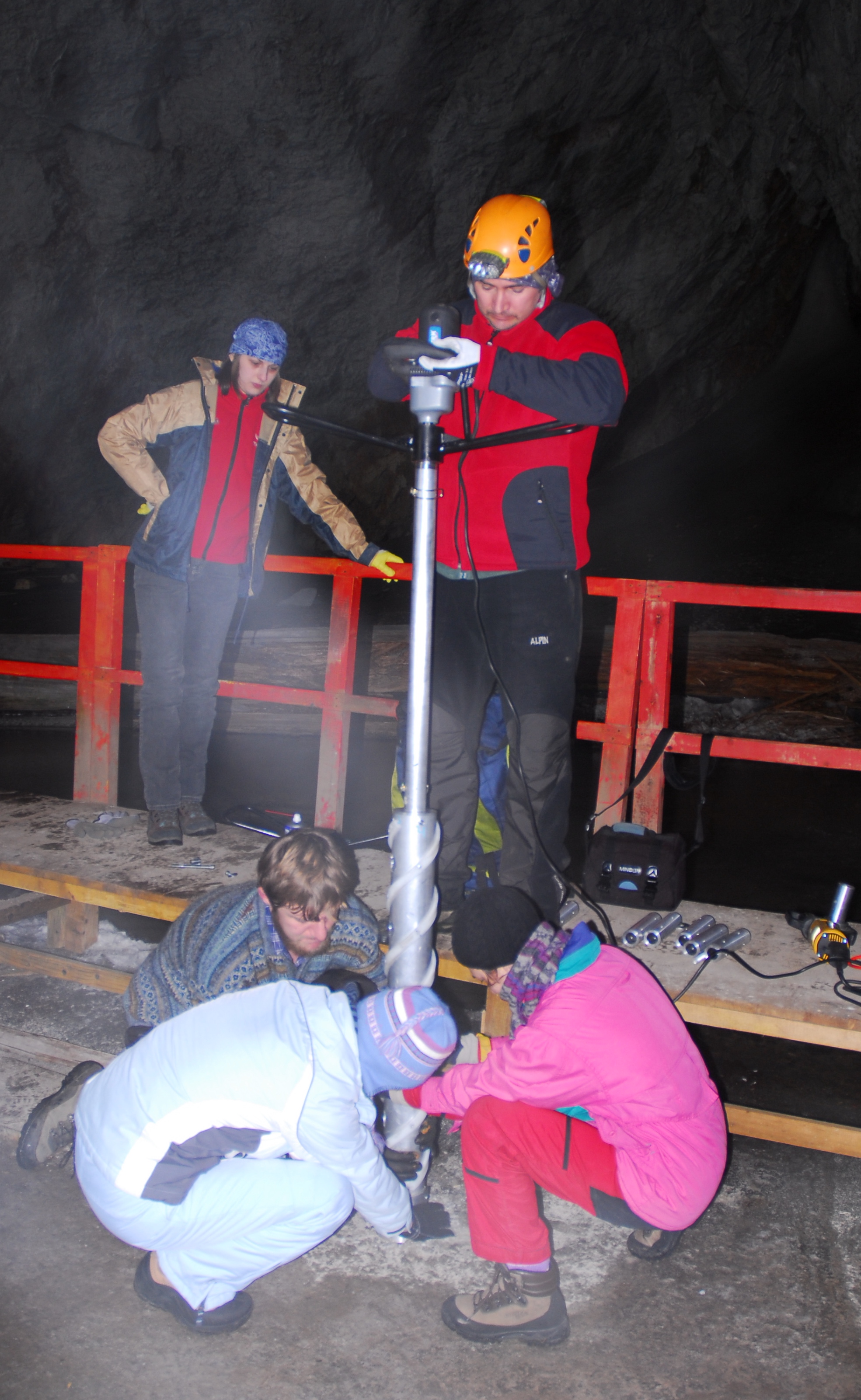
2020
Dr. Magdalena Osburn and Mr. Matthew Selensky, Northwestern University
Constraining the Mammoth Cave Nitrogen Cycle with a Combined Sequencing and Isotopic Approach
Cave environments are full of nitrogen, but where it comes from and how it is moved around by underground microbes has been an open question for 150 years. Mammoth Cave is particularly understudied in this regard, despite historic mining of saltpeter, and is an ideal place to test competing hypotheses of nitrogen delivery and transformation. We hypothesize that nitrogen eating microbes living within Mammoth Cave are key players in the cave nitrogen cycle. We will combine DNA sequencing with isotope geochemistry to 1) Measure the abundance and isotopic composition of different kinds of N across the cave, 2) Constrain microbial N cycling using protein isotopes, and 3) Identify microbes that can eat different forms of N using their genes. These data will tell us how N moves through the Mammoth Cave system using cutting edge methodology that has not been previously available. These new data will help us understand the subsurface N-dynamics in Mammoth Cave and the habitability and biogeochemistry of cave and karst systems more broadly. We will share what we learn with the public with an exhibit in the visitor center and to the world via social media.
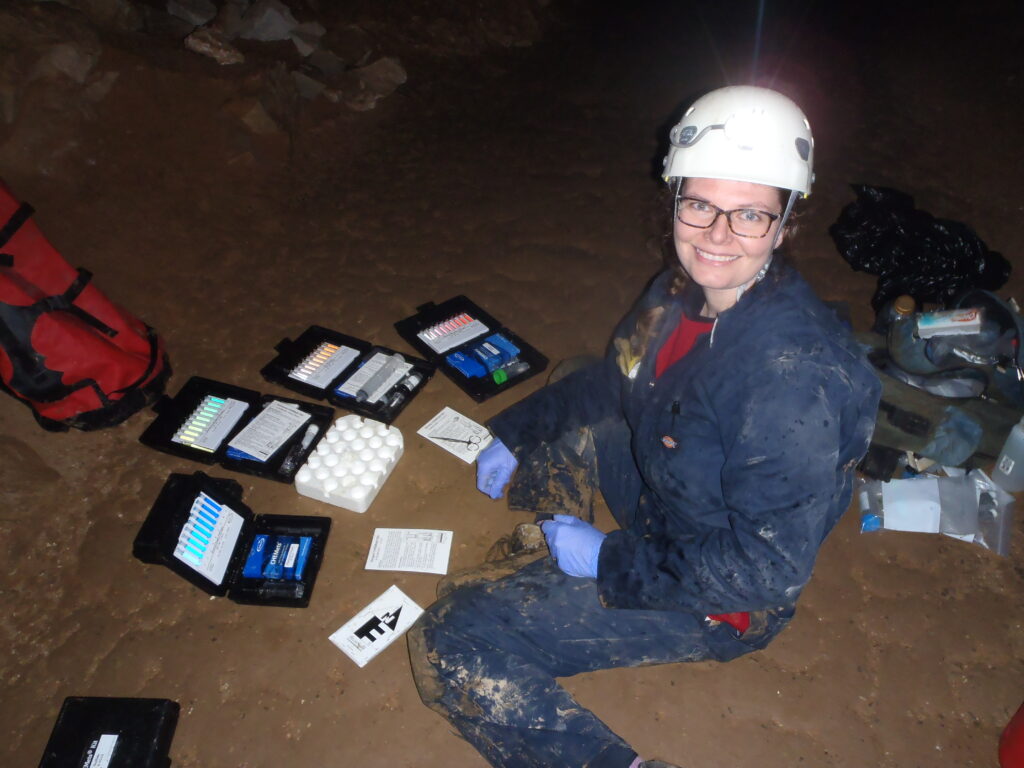
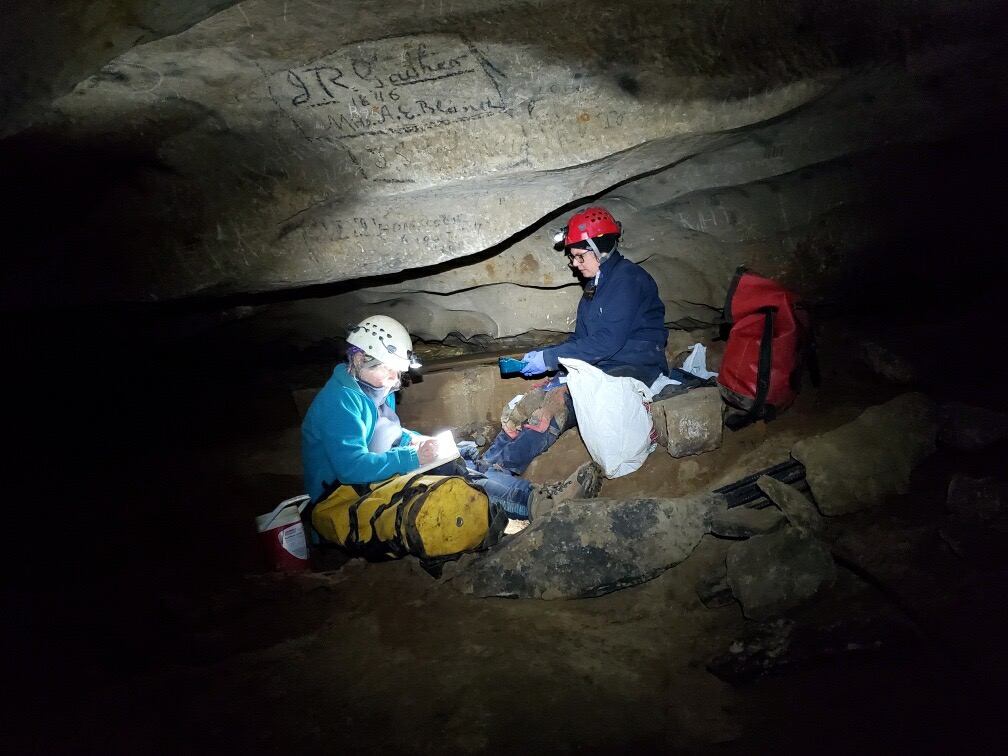
Dr. Georgina Lukoczki and Dr. Benjamin W. Tobin, University of Kentucky
Controls of dolomitization on matrix porosity and its effect on cave passage formation as inferred from numerical simulations based on geochemical and experimental analyses
The goal of Dr. Lukoczki and Dr. Tobin’s research is to clarify the complex relationship between cave formation and physical and chemical characteristics of the cave-hosting dolomitic rocks. How the original limestone or lime mud transformed into dolomite is likely a key factor in how further alterations of the rock occur, including cave passage development. Samples with varying degrees of resistance to dissolution will be collected from the Flint Mammoth Cave System and the Edward Mountain System of Kentucky. Fundamental characteristics of cave-hosting dolomites will be investigated, such as the fabric of the original sediment, the texture and porosity of the dolomites, and geochemical characteristics that will help us identify the processes that resulted in dolomitization. The results obtained from experimental dissolution and numerical simulation studies together with advanced geochemical analyses will help us better understand the processes that lead to the formation of caves and karst in dolomites.
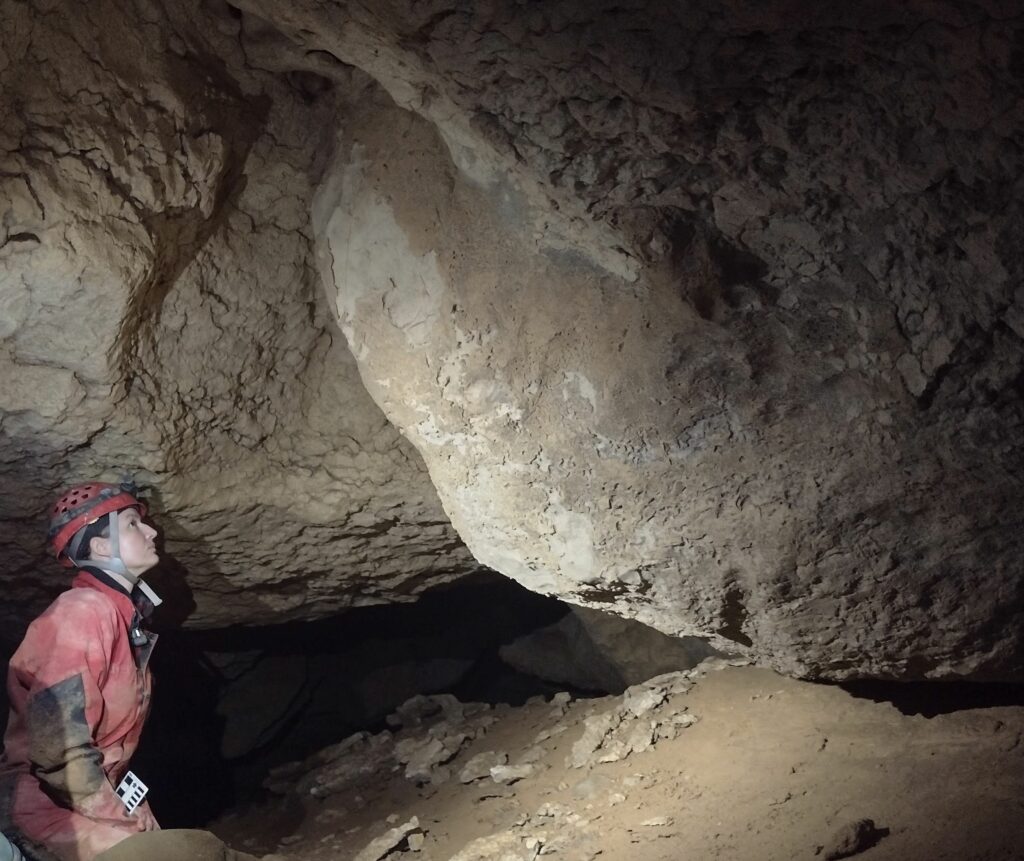
2019
Dr. Elizabeth Hasenmueller, Associate Professor, Saint Louis University
Quantifying Microplastic Debris Transport and Sourcing for a Karst Aquifer
Karst aquifers are unique habitats and important drinking water sources, but high connectivity between the surface and subsurface in these systems makes them susceptible to contamination. Agricultural runoff and leaking wastewater infrastructure can impair karst aquifers with biological (fecal bacteria) and chemical (nutrient and toxic metal) pollutants, but they may also be significant sources of emerging contaminants like microplastics (plastics that are smaller than 5 mm in diameter). Plastic debris can cause significant harm to aquatic life when organisms become entangled in the plastics or consume them. Little is known about the transport and sourcing of microplastic contamination in karst aquifers, with only a single previous study noting the presence of microplastics in karst groundwater during periods of low flow. Further research on microplastic contamination of karst is therefore critical given that karst aquifers experience rapid changes in flow during flood events, are highly connected to the surface where pollutants are sourced, offer unique habitats, and provide drinking water. Thus, this study will quantify and characterize microplastics (including their size, shape, and polymer type) in a karst aquifer under variable flow conditions. We hypothesize that microplastic loads increase during flood events as the higher flow mobilizes material from the surface into the aquifer and, potentially, from stores within the aquifer. We will use sediment characteristics and dissolved organic carbon concentrations to establish if microplastics are sourced from the surface and/or remobilized from within the aquifer. Additionally, we will test if microplastics co-occur with chemical tracers indicative of human inputs from agriculture, wastewater, or roads. The study also intends to help resolve an ongoing need in the microplastics community to standardize procedures for monitoring microplastic debris, especially for groundwater systems where there is very limited prior work and lack of quality control measures. Our research will provide a baseline for future work related to the transport and fate of microplastics in karst and groundwater environments and can be used to inform debris mitigation strategies.
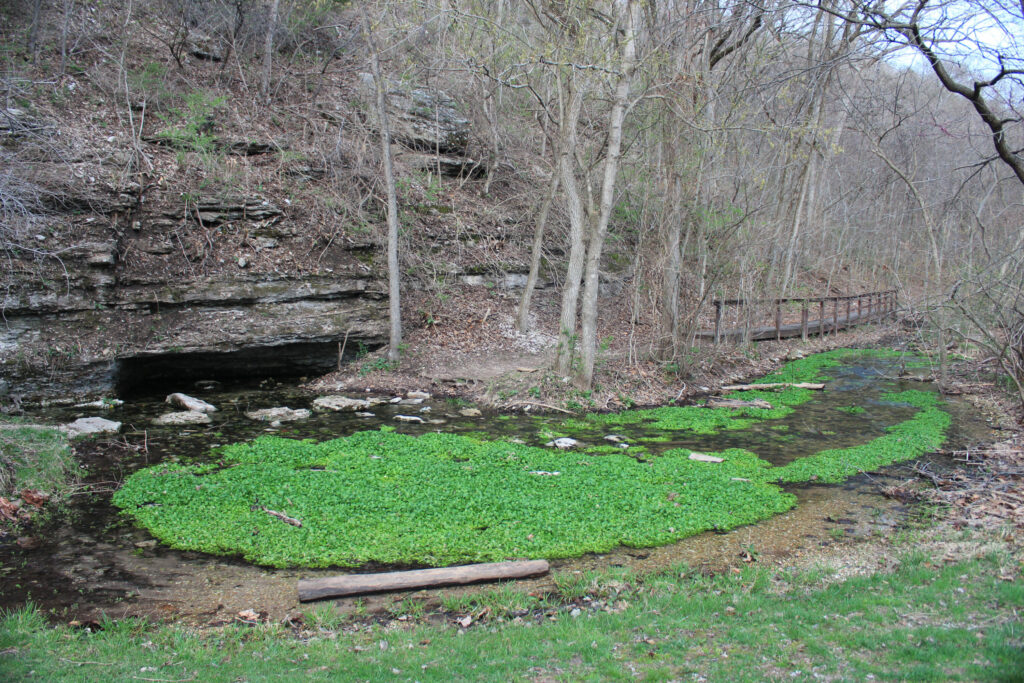
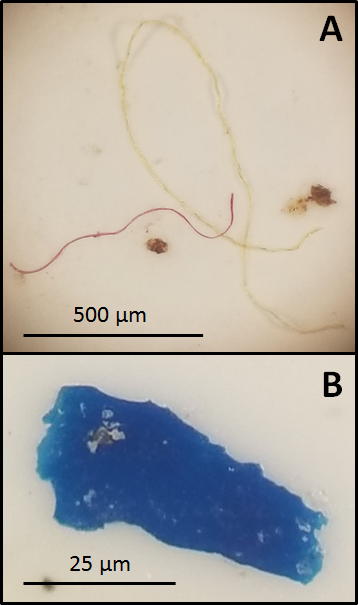
Dr. Dylan Ward, Associate Professor, University of Cincinnati, and Co-PI Rachel Bosch, PhD candidate, University of Cincinnati
Stream Capture From Below: Formation of the Sinkhole Plain, Kentucky, Through the Lens of Relict Topography
In areas with many closely spaced sinkholes, such as the Sinkhole Plain near Mammoth Cave in Kentucky, surface river networks cannot develop, because streams encounter sinkholes and their water and sediment (silt, sand, and gravel) are all carried into the subsurface system of cave passages (karst network). As limestone layers are revealed by river networks in higher up, younger rock layers, those river networks become increasingly disrupted by development of sinkholes in the underlying limestone, and progressively more of the sediment eroded from overlying layers must be transported through the developing karst network. In our study area of central Kentucky, multiple tributaries to the Barren River were cut off from below by the development of sinkholes and cave passages in the Sinkhole Plain, and diverted to flow to the Green River, migrating the drainage basin boundary between the Barren and Green watersheds westward over time. This project will use modern geomorphic tools to evaluate the quantity of rock that must have been removed from the landscape via sinkholes and karst passages to form the modern Sinkhole Plain, the time over which this occurred, and the consequences for the regional river systems.
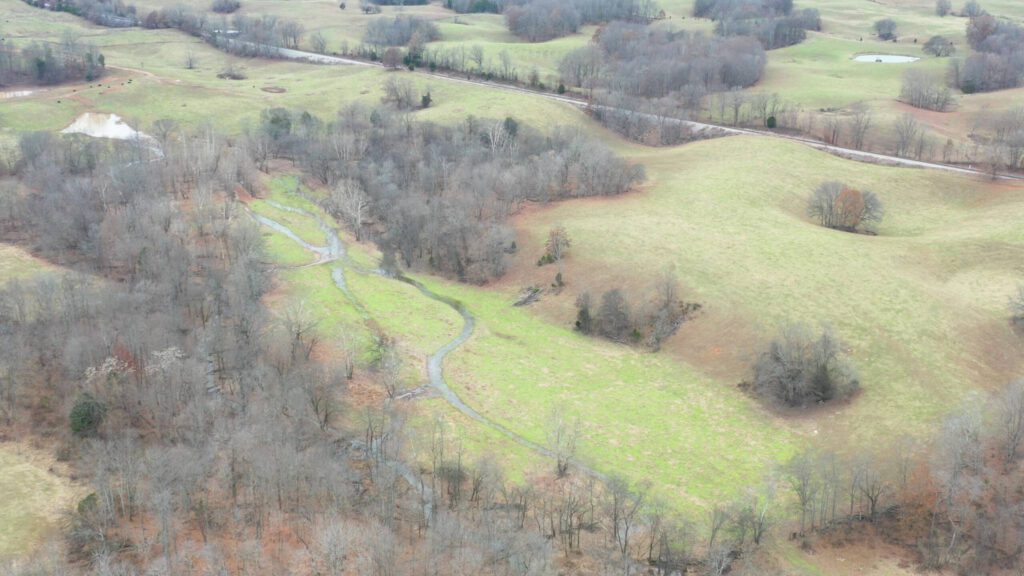
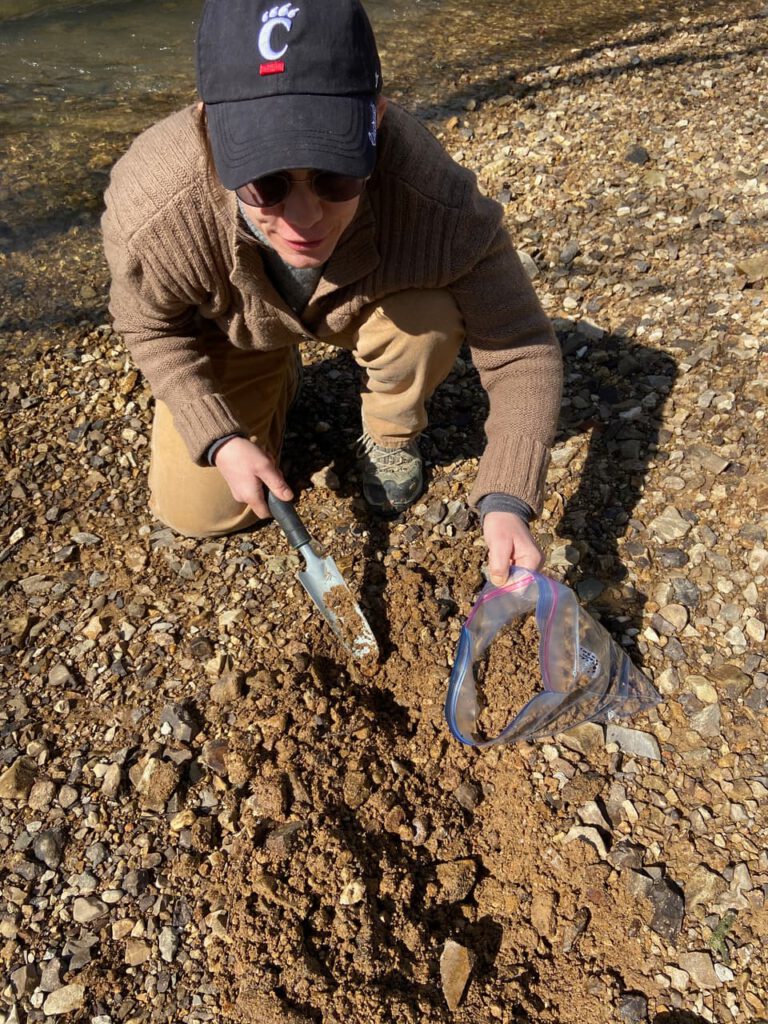
NCKRI Scholar Fellowship Program
The NCKRI Scholar Fellowship Program supports cave and karst research by exceptional graduate and undergraduate students.
2024
Graduate Student, Bryant Labajo Pahl, University of California, Irvine
LIDAR-SLAM and Photogrammetry Cave Applications in Tamaulipas, Mexico
This project is about creating detailed 3D maps of caves in Tamaulipas, Mexico, using advanced scanning technologies like LiDAR and photogrammetry. These maps will help us learn more about the caves’ features, such as how water moves through them and their structure. The information we gather will support ongoing scientific research in geology, Earth history, archaeology, and water systems. By working with the El Cielo Biosphere Reserve, the project also aims to protect the region’s cultural heritage and promote sustainable tourism and community-led research.

Graduate Student, Olivia Vinnes, University of Tennessee, Knoxville
Fumarole-Carved Ice Caves as Natural Laboratories: Extreme Microbial Membranes and Multi-drug Resistant Pathogens
Fumarole-carved ice caves, formed by volcanic gases escaping through glacier cracks, are among the rarest cave types on earth. Our team will explore the ice caves of Mt. Baker in Washington, in order to investigate the unique microbial communities thriving in these extreme environments. Previous studies of ice caves on Mt. Meager in Canada revealed the presence of the genus Mycobacteria — some members of this group are known to be the causative agent for tuberculosis and leprosy. These findings are intriguing due to Mycobacteria’s resilient mycolic acid-rich membranes, which enable them to survive under extreme conditions. These fumarole-carved ice caves act like natural laboratories, complete with enclosed vapor cycles, allowing us to delve into how these distinct microbes adapt and thrive. Microbial and geochemical data will be collected and we will employ specialized culturing techniques to grow mycolic acid-rich bacteria. We will conduct a comparative study with Mt. Meager, to enrich our understanding of these unique ecosystems. Through in vitro experiments, we will examine how these resilient microbes respond to environmental stress, unlocking new insights into their survival mechanisms and potential implications for human health.
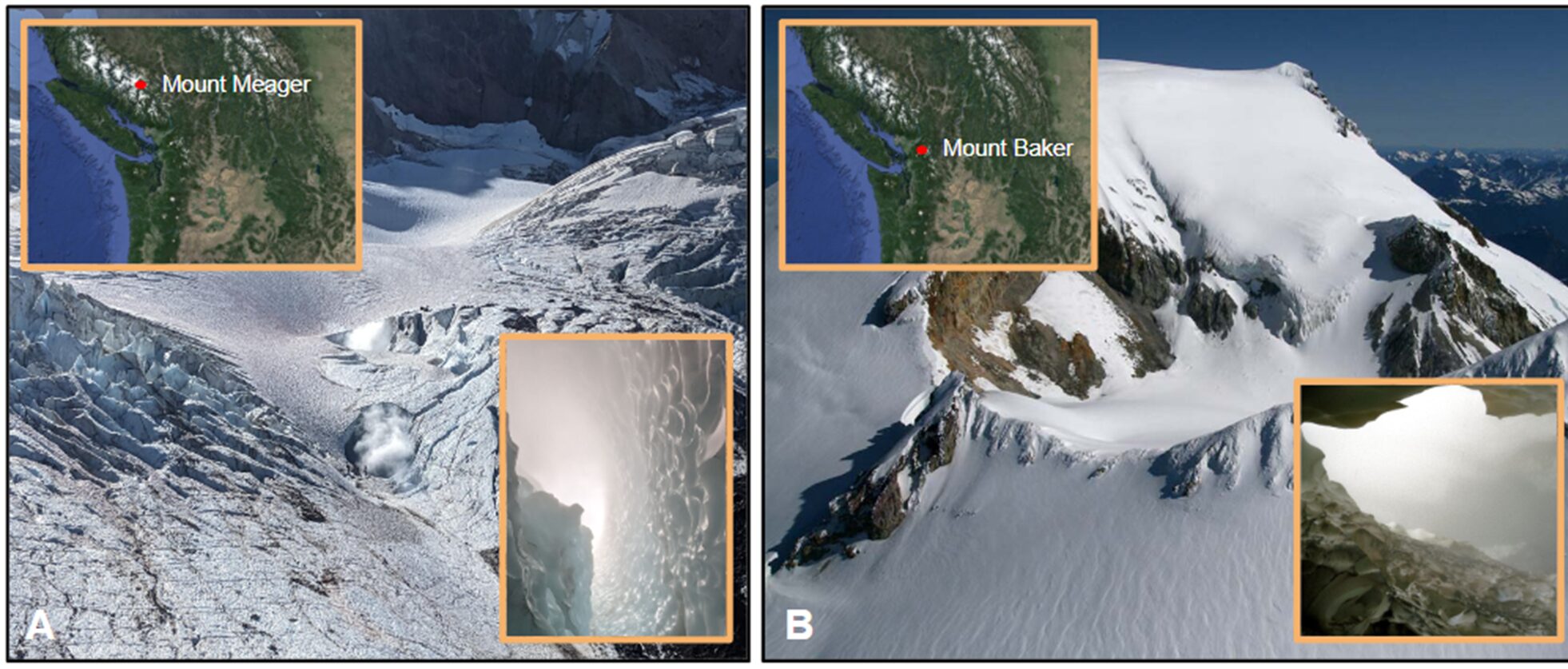
Graduate Student, Benjamin Hauschild, Western Kentucky University

Improving Water Resource Management in Barbados Using Applied Forensic Hydrology
This study investigates water resource management challenges on the small, karstic island nation of Barbados, located in the North Atlantic Ocean at the eastern edge of the Caribbean Sea. Due to Barbados’ reliance on its limited groundwater resources for its industrial, agricultural, and residential needs the island is extremely vulnerable to storm patterns, sea level rise, and drought. This compounded with a growing population and tourism industry is leading to numerous water quantity and quality issues and underscores the critical importance of sustainable water resource management on the island.
Through a multifaceted approach, including water level and precipitation monitoring, forensic hydrologic tracers (stable isotopes and dye tracing), and remote sensing analysis, this study endeavors to enhance the understanding of the groundwater dynamics, recharge patterns, and water resource availability in Barbados’ karst environment. Through a collaboration with the Barbados Water Authority (BWA) and Caribbean Institute for Meteorology and Hydrology (CIMH), this research seeks to provide valuable insights for improved water resource management approaches, addressing critical questions regarding groundwater-surface water interactions, recharge dynamics, and the influence of human activities on the islands’ karst hydrology. Finally, this research contributes to a broader understanding of coastal karst islands and offers valuable insights for water resource management in similar regions around the world.
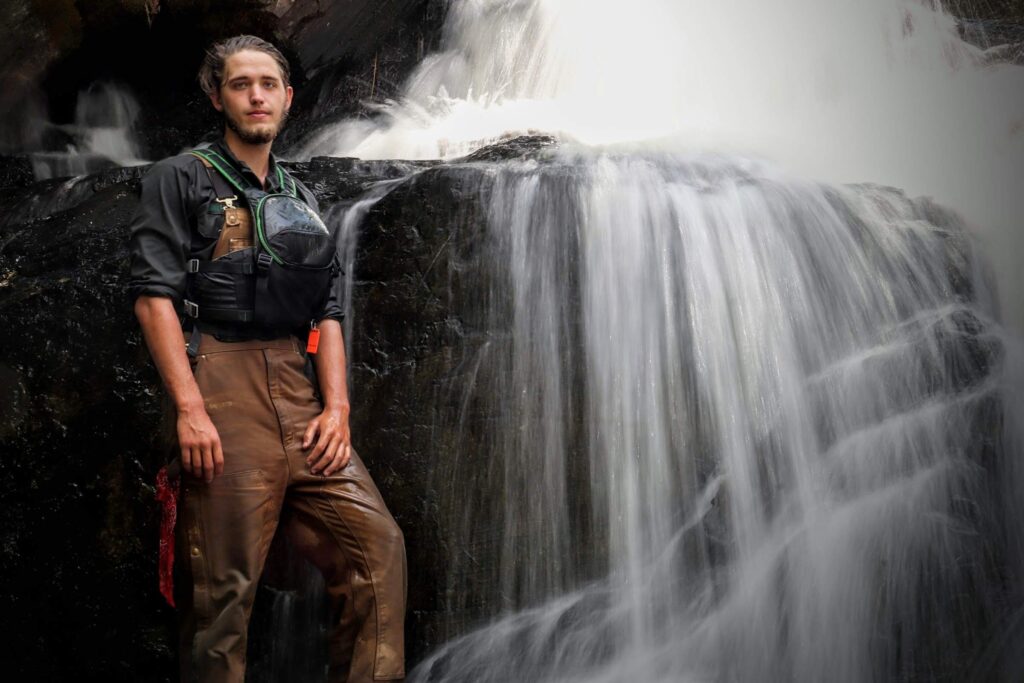

Undergraduate Student, Jacqueline Heggen, University of Northern Iowa
The Influence of Organic Overburden on Karst Speleothems.
In order to develop techniques to detect life-sustaining compounds within the Solar System, analog systems must first be studied on Earth. Terrestrial caves present an opportunity to examine the flow of organics in an environment that is mostly isolated from external realms yet remains within human reach. Utilizing multiple cave systems with different overburden environments, potential variables that aid in the flow of resources can be evaluated. Trapped organics within flowstone and cave water will be analyzed using fluorescence spectroscopy to examine the unique fluorescent fingerprint of stored organics underground. By freezing cave water with liquid nitrogen, cryogenic ice features, similar to what may be in Europa or Enceladus, can be created and studied, providing clues into the behaviors of organics on the icy moons of the Solar System. To characterize compounds that contribute to fluorescence, organics residing within cave water will be analyzed with liquid chromatography-mass spectrometry. By identifying fluorescent compounds within isolated environments, the influence of organically rich overburden can be studied and used in future model data sets.
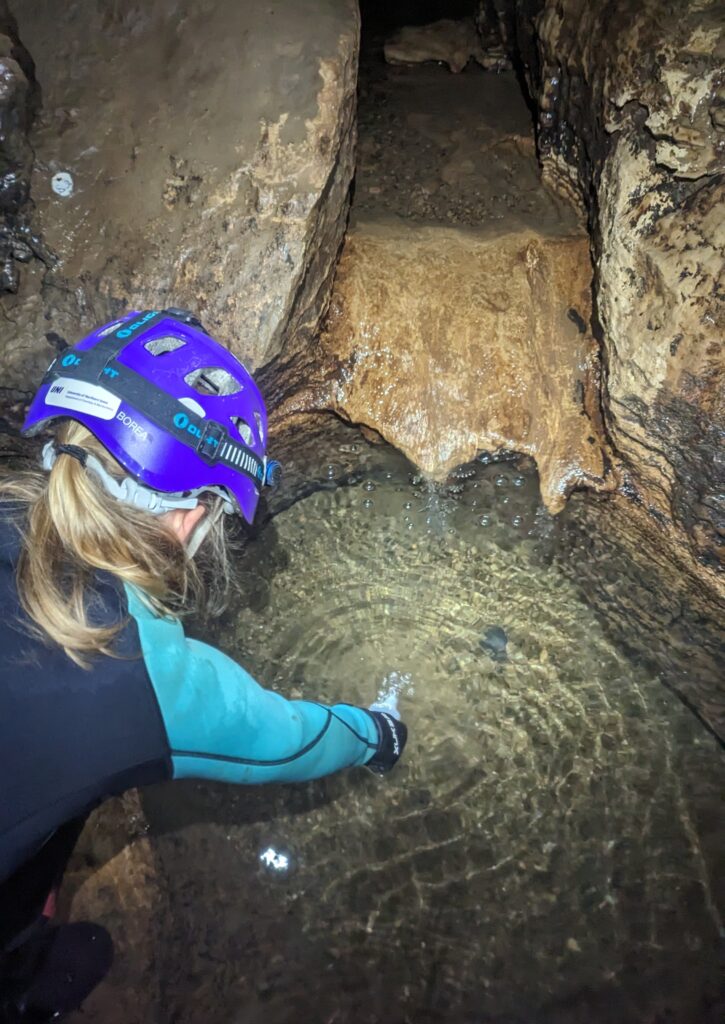
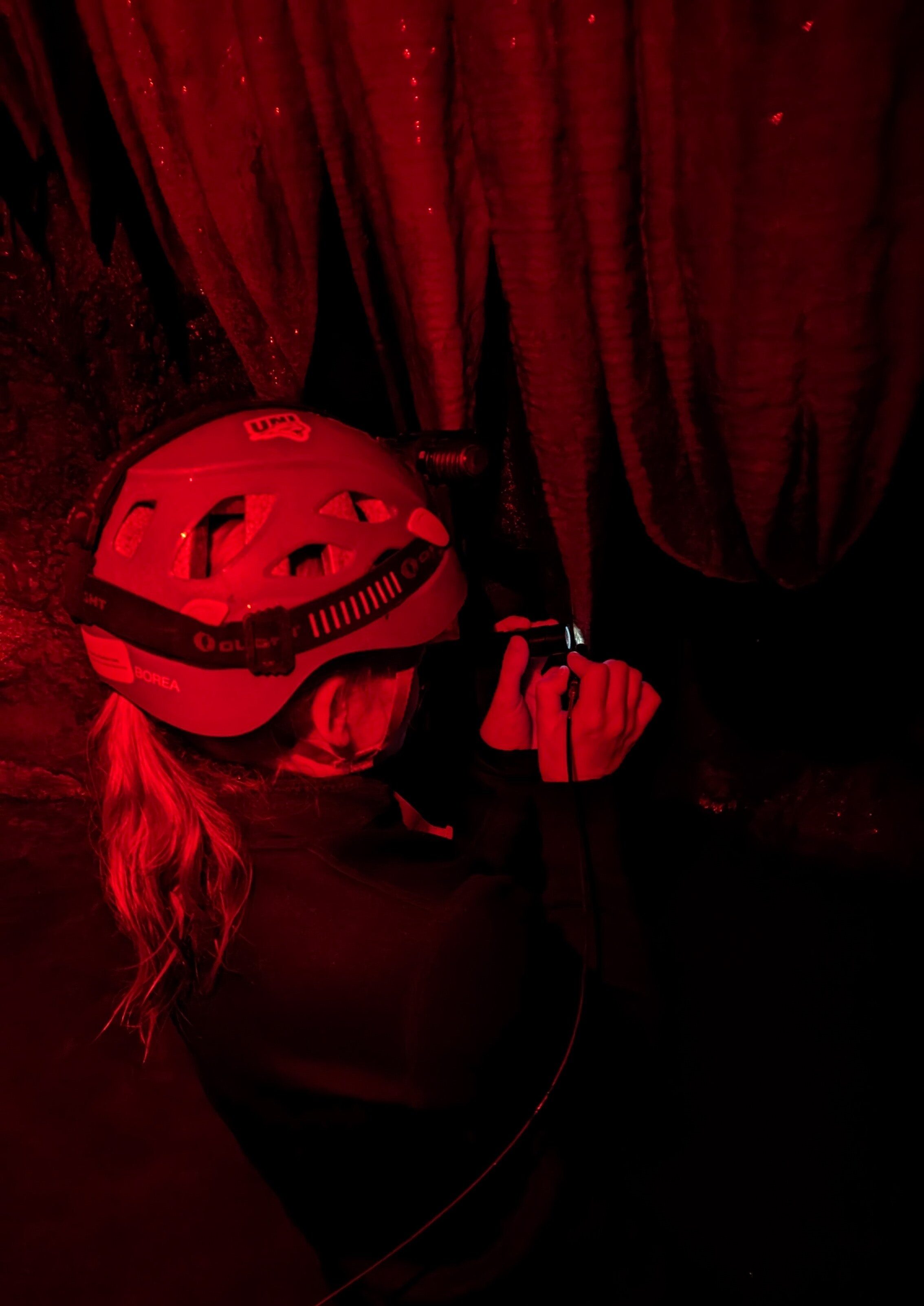
2021
Graduate Student, Jeremy Vandenberg, NAU Department of Biological Sciences, Cave Ecology Lab
Characterizing Diet, Summer Movements, and Roost Habitat of Townsend’s big-eared bats (Corynorhinus townsendii) in Northern Arizona
Wildlife managers have limited knowledge concerning the diet, landscape use, and summer habitat of Townsend’s big-eared bat (Corynorhinus townsendii) in northern Arizona. This study will investigate these knowledge gaps in two main ways. First, tracking bats using high-frequency radio transmitters will determine how they are using the landscape in the summer for foraging, roosting, and raising young. Second, DNA analysis of bat feces will determine the breadth and content of their diet during the summer season. The importance of this research is emphasized by the impending impacts of environmental change and white-nose syndrome on bat populations in northern Arizona. My results will enable regional land managers to protect important roosting and foraging habitat of Townsend’s big-eared bat, facilitate further study of population trends, and better understand the ecology of cave-roosting bats in northern Arizona.
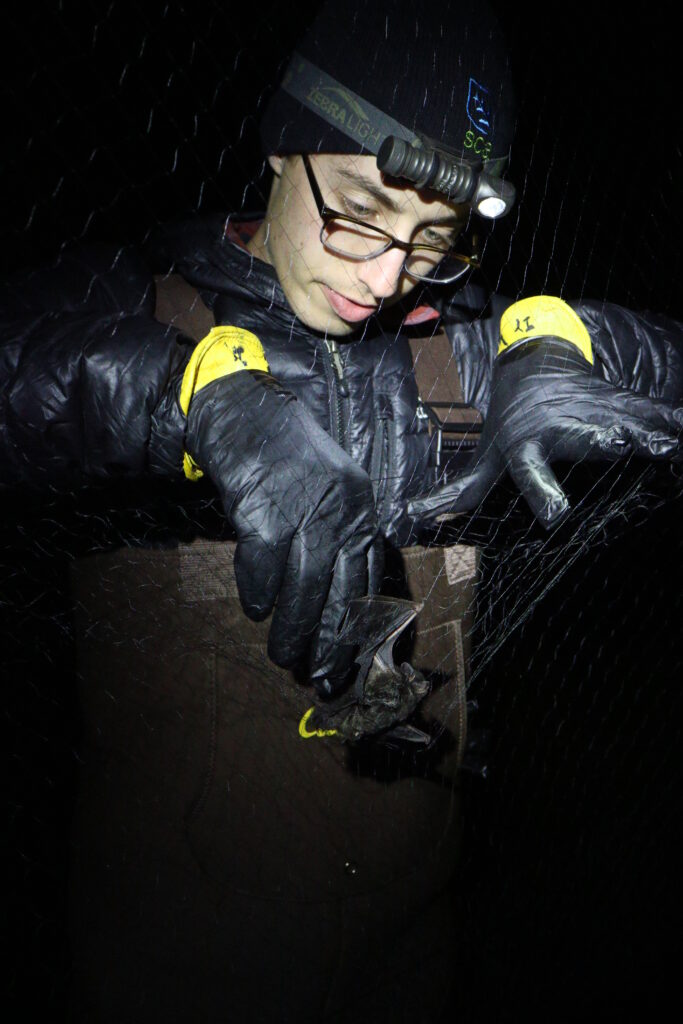
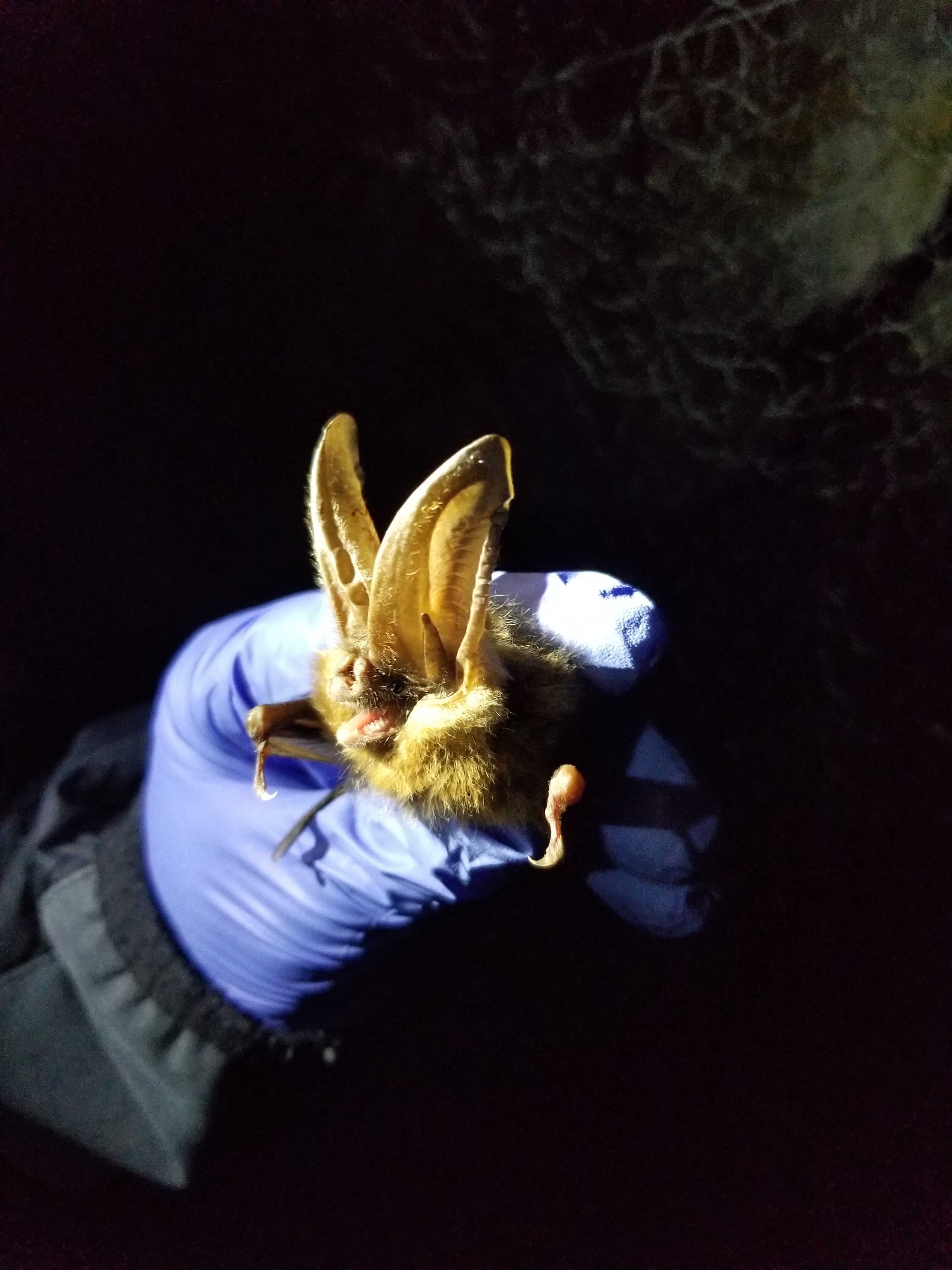
Graduate Student, Brendan Cramphorn, The University of Alabama in Huntsville
Phylogeography, Speciation, and Cryptic Diversity in Pseudosinella Cave Springtails (Entomobryomorpha: Entomobryidae) of the Interior Low Plateau and Appalachian Valley & Ridge Karst Regions
Caves offer a unique opportunity to study the ecology and evolution of life in extreme environments. Many different groups of invertebrates and vertebrates have evolved similar adaptations to living in habitats that lack light and generally have limited energy resources. However, the same processes the drive diversification in subterranean fauna can also obscure true levels of biodiversity. Traditional taxonomy of most subterranean organisms has relied heavily on morphology. However, several molecular studies in recent years have uncovered high levels of cryptic diversity in some subterranean organisms. More widely distributed species that were delimited using morphology are comprised of multiple, genetically distinct lineages. However, many subterranean species remain to be genetically studied. In this project, I examine the potential for cryptic speciation in three cave springtails of the genus Pseudosinella (P. christianseni, P. hirsuta, and P. spinosa) that are broadly distributed in the Interior Low Plateau and Appalachian Valley & Ridge karst regions of the eastern United States. I will integrate morphological and genomic approaches to determine true levels of species and genetic diversity and investigate factors that shape genetic structure and species distributions. Outreach activities will include the development of species profiles for the Cave Bio data portal and cave springtail-focused teaching and learning modules for summer camps. This project will assist in conservation efforts of this overlooked invertebrate group and expand on our knowledge of the factors that drive cryptic speciation in subterranean organisms.


Undergraduate Student, Aspen Huseman, Henderson State University
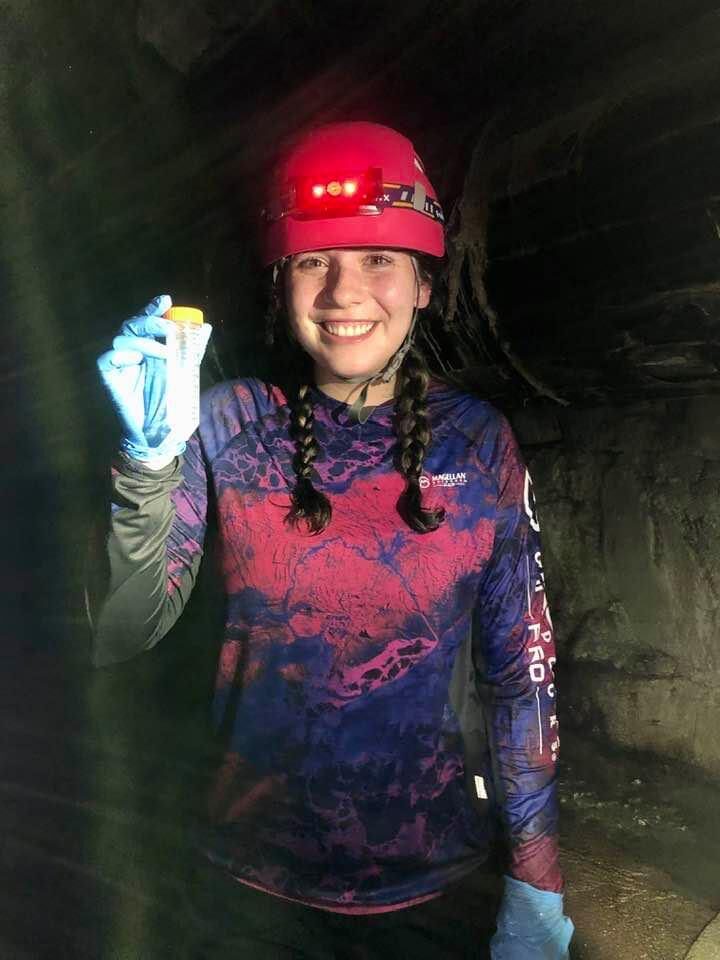
Analysis of a Presumptive Chemoautotrophic Cave Ecosystem
Ms. Huseman is a junior biology major at Henderson State University, in Arkadelphia, Arkansas. Her research focuses on the ecology of a unique cave in the Highland Rim Geological Region of Central Tennessee, which is incompletely explored, but currently mapped to over 15 miles. The cave is referred to by the pseudonym “Secret Squirrel Cave,” to protect it from unwanted disturbance.
While most caves are formed by the force of water from the surface creating the passages from above (epigenic caves), this system appears to be at least partially formed by sulfuric acid speleogenesis, a process where hydrogen sulfide from below the cave is converted by microbes to sulfuric acid that then erodes away the limestone, often leaving gypsum formations behind. Lechuguilla and Carlsbad Caverns are two better known examples of such caves. Ms. Huseman’s study site has been named the “Petroleum Passage,” for its pervasive petroleum smell. There, an active stream pool with “mini-vents” occasionally expel globules of an oily substance. These mini vents are surrounded by concentric colored rings of sediment. At times, this passage holds dense populations of cave salamanders and cave- adapted millipedes. She hypothesizes that these organisms are supported by microbial action, without the input of the products of photosynthesis on the surface. She plans on furthering her research using 16S rRNA gene sequencing to expand her team’s understanding of the composition of the microbial community, and stable isotope analysis to track the movement of energy from the microbes to the invertebrates and vertebrates, predicting that the higher organisms will be “isotopically light,” a finding that would support the hypothesis that the system is functioning without, or without much, input from photosynthesis. Such subterranean systems have been suggested as potential models for life in subsurface environments on Mars.
Undergraduate Student, Cody Kisner, University of Cincinnati
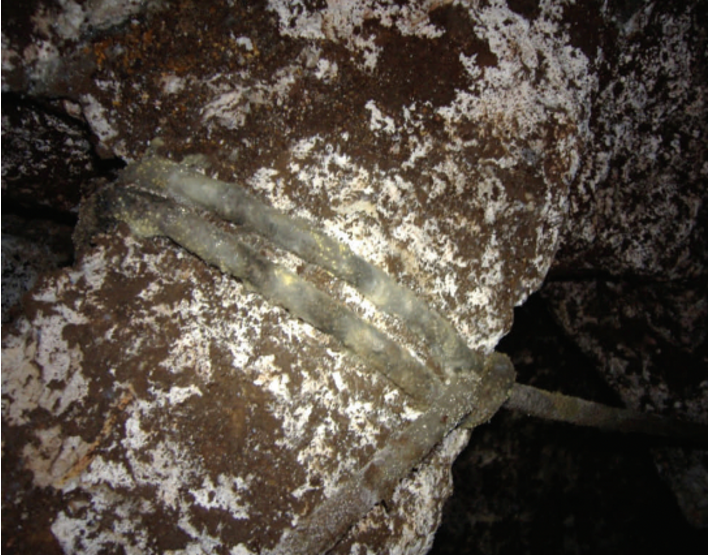
Assessing Growth of Fungus on Rope Strength in Lechuguillla Cave
Fungi reside in almost every habitat on earth. One of the many ecological functions of fungi are as decomposers and recyclers of organic material. In Lechuguilla Cave fungi have been observed growing on the nylon sheathing of newer ropes that are permanently rigged in the cave. Given that nylon is a recalcitrant polymer, it still has an organic chemical structure, and it is uncertain whether fungal growth has an effect on rope strength. In this project I will test the strength of nylon fibers exposed to fungus from the cave. The obtained could provide valuable information to the National Park Service on rope management in caves.
2019
Heidi Aronson, PhD Candidate, University of Southern California
Geochemical and Cultivation-Based Investigation of Gypsum-Hosted Microbial Communities in the Frasassi Caves, Italy
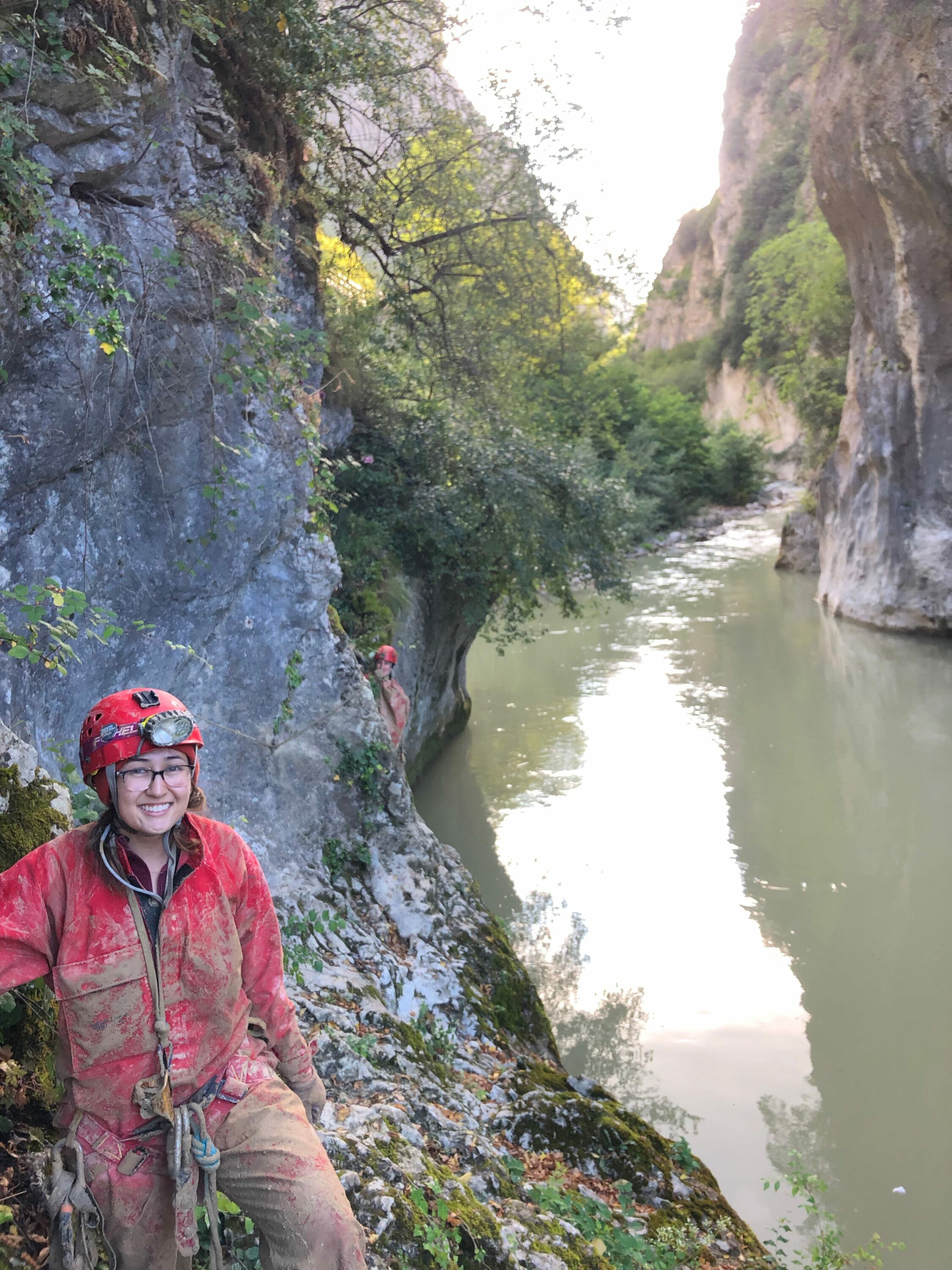
The karst at Frasassi, Italy, hosts a dynamic sulfur cycle which powers microbial chemolithotrophy. While many geochemical niches at Frasassi have been studied extensively, much less is known about the geochemistry and microbial communities associated with gypsum deposits. Ms. Aronson is measuring the concentrations of sulfide, thiosulfate, sulfite, elemental sulfur, polysulfides, and calcium within the gypsum deposits. These concentrations will be used to calculate the energetic yields of reduction-oxidation reactions involving sulfur to determine which reactions could power microbial metabolisms. One reaction, sulfur comproportionation (the reaction of sulfate and sulfide to form elemental sulfur), is a novel microbial metabolism that has not yet been discovered in the environment. It is thermodynamically favorable within Frasassi gypsum and could plausibly be used as a source of energy for microorganisms. Ms. Aronson is designing a cultivation medium using in situ geochemical conditions to enrich for and isolate a sulfur comproportionator from the gypsum. Her work will help to reveal the contributions of gypsum-associated microbial communities to the overall sulfur cycle at Frasassi, and how their metabolism may impact cave formation.
William Coleman, PhD Candidate, Texas State University
Variance in Genetic Diversity of an Endangered Freshwater Beetle Before and After an Adverse Event
Adverse events, such as severe drought, can have devastating effects on aquatic ecosystems. For animals restricted to habitats such as karst spring complexes, prolonged droughts may result in decreases in population size and a rapid loss of genetic diversity, reducing fitness in populations. Mr. Coleman is investigating the potential impacts of severe drought on an aquatic endangered species known from only two karst spring complexes in central Texas. He is characterizing and comparing genetic diversity of the Comal Springs Riffle Beetle (Heterelmis comalensis) in the Comal Springs complex, before and after a 2010-2015 drought. During this drought, different openings in the complex experienced partial or complete drying, based on spring opening elevations. Mr. Coleman is also investigating changes in genetic diversity in the San Marcos Springs population (which experienced less severe drought effects) over approximately the same time-scale. These data will allow him to quantify temporal variance in genetic diversity within and among populations at individual spring openings, and within and among populations at the Comal and San Marcos spring complexes. Next-generation DNA sequencing will be used to generate the genomic data, which will then be used to quantify changes in effective population size. This information is needed to understand the effects of adverse events on endangered karst-spring endemic organisms, and to inform effective conservation and management.
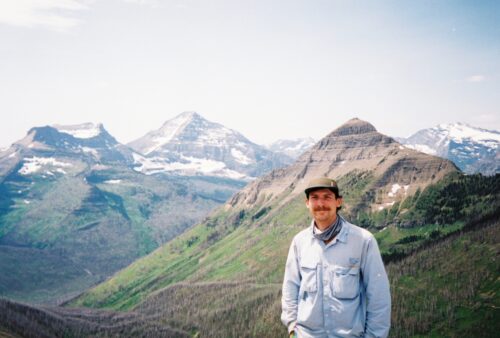

Natasha Sekhon, PhD Candidate, The University of Texas at Austin
Decoding Dry and Wet Conditions in Semi-arid New Mexico by Studying the Mineral Deposits in a Cave
The state of New Mexico relies on rain and snowfall to replenish its numerous but depleting aquifers. These aquifers form a vital artery on which numerous livelihoods depend. Recent studies have shown a drastic decrease in the water levels of the Rio Grande and a rapid temperature increase in New Mexico as it becomes the 6th warmest state in the United States. The complex hydrology of the region dictates the oscillation between drought and non-drought periods. Instrument records, going back to the early 20th century, allow us to study dry and wet periods for that time period. In order to glean pre-instrumental conditions, which would advance our understanding of the region, scientists study the chemistry of cave deposits.
Ms. Sekhon’s PhD research is largely focused on understanding how pre-instrumental dry and wet periods have changed through time by investigating the various mineral concentrations of cave deposits in southeastern New Mexico. Trickling rainwater, carrying surface minerals with it, flows through the rock above caves. The rainwater eventually makes its way into the subterranean world where it gets deposited as stalagmites and stalactites over tens to hundreds of years. Similar to tree-rings, as stalagmites grow, each stalagmite growth ring encapsulates important chemical clues on what the land surface was like above the cave. By looking at numerous mineral concentrations in the growth rings, Ms. Sekhon will establish a record on how dry and wet periods have changed through time in such a drought sensitive region. The first step is to investigate stalagmites that grew overlapping with instrumental data, permitting researchers to make robust relationships between the chemical clues (proxies) and known instrumental data. On establishing this relationship, we can then look at stalagmites that grew much before the instrumental period (pre 1930s), thereby, equipping us with tools to investigate hydrologic trends through time.
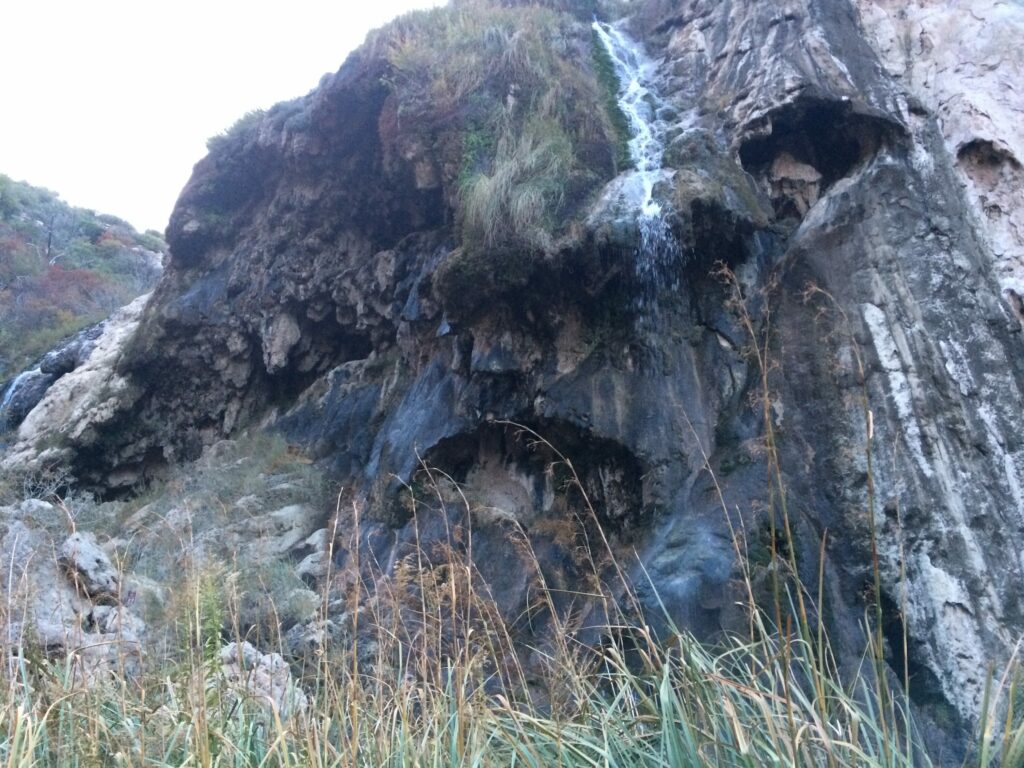
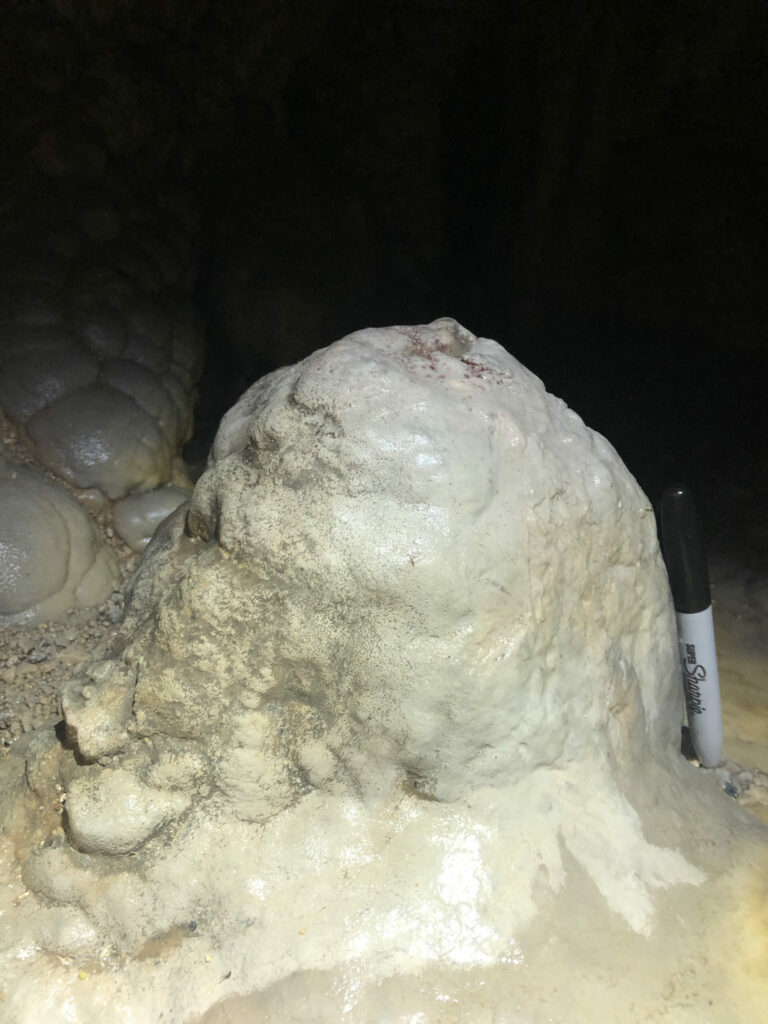
NCKRI-NMT Internal Seed Grants
The NCKRI-NMT Internal Seed Grant Program creates opportunities for investigators at NCKRI and New Mexico Tech (NMT) to initiate new cave and karst research. It also expands NCKRI’s research footprint by enhancing collaborations with NMT faculty and students.
2024
Dr. Ranalda Tsosie, New Mexico Tech Department of Earth and Earth Science

Evaluating Potential Impacts of PFAS and Micro- and Nano-plastics in Cave and Karst Water Sources
This study will focus on understanding the potential presence and impacts of per- and polyfluoroalkyl substances (PFAS) and micro- and nano-plastics (MP/NP) in cave and karst systems located within Diné lands and in southern New Mexico. Both PFAS and MP/NP are emerging contaminates that have large impacts on human and environmental health.
Karst systems are important to all life simply because water is life. The water we depend on also come from karst aquifers, springs and wells. However, these systems are easily contaminated but in cave and karst systems the extent of contamination is poorly understood (NCKRI, 2024). Therefore, this research will aim to expand the understanding of contamination in these systems while incorporating Indigenous methodologies and community engagement.
Dr. Rachel Coyte, New Mexico Tech Department of Earth and Earth Science
Investigating Water Sources and Hydrogeochemistry in Nash Draw’s Evaporitic Karst Region
This project examines groundwater dynamics in Nash Draw, a karst valley near Carlsbad, NM, shaped by complex land uses such as mining, oil drilling, and nuclear waste storage. Using isotopic and geochemical tools, the study aims to understand how karst features impact the hydrology of the region and inform sustainable land and water management. Outreach activities will include creating educational visuals and GIFs in collaboration with the National Cave and Karst Research Institute to help communicate the scientific principles behind water tracer studies to the public. The outreach will also engage students in developing their own visuals to promote broader scientific literacy about karst environments.

Dr. Curtis O’Malley, New Mexico Tech Department of Mechanical Engineering
Compliant Mechanisms in Remote Climbing Exploration Systems
Dr. Curtis O’Malley’s robotics outreach and research lab will be working over the course of the next year to develop a proof of concept of a robotic manipulator to be integrated into a robotic system capable of exploring remote cave and karst networks. This robotic system will reduce the risk of biological contamination associated with sending a person into the remote or sensitive ecological environment. The project team is currently working to incorporate soft robotics or compliant systems and materials into robotic platforms to make them intrinsically stable and able to climb, traverse, or scale more complex and challenging terrain that either a traditional robot or human could navigate. The first phase of this new work will develop compliant end effectors to maintain positive engagement with the surface being scaled or traversed. The resulting system could be used to both explore a cave network without introducing biological contamination or aid a human exploration team by scaling to a remote entrance to a chamber that a climber could not safely reach and installing an anchor.
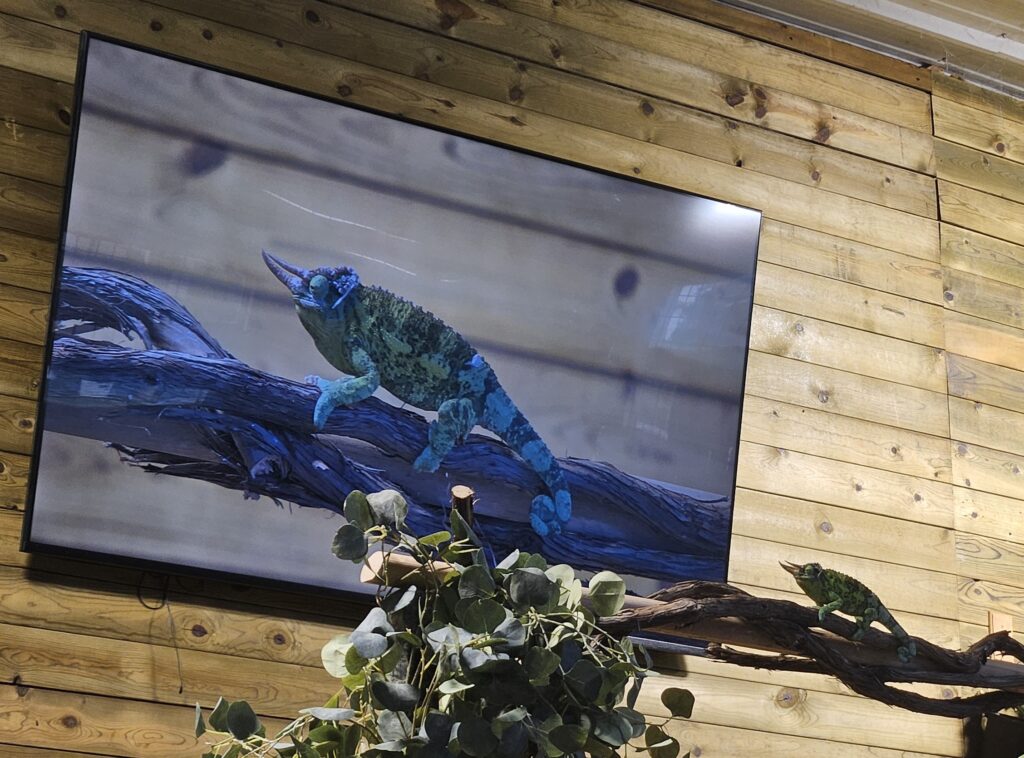
2020
Dr. Kooktae Lee, New Mexico Tech Department of Mechanical Engineering
Development of a Hybrid Drone for Sustainable Cave and Karst Research
Caves and karst terrains are particularly challenging to survey because of the small size as well as the maze-like nature of the passages. Although roboticists have developed special types of robots in efforts to replace human surveyors by robots, robotic operations are technically difficult because of severe environments such as rough terrains with many large rocks, deep holes, and underground rivers. Flying robots (drones) have an ability to overcome extreme environments in cave and karst, and thus are superior to any other robot platforms in exploring caves and karsts. However, most of commercial drones can only fly up to 25 minutes. This is a critical problem as many caves and karsts have lengthy passages that cannot be covered in a short time. The major goal of this research is to develop a hybrid drone (helium balloon + drone as shown in the provided figure) that can 1) increase the drone’s flight time at least by an hour; 2) maintain the size of the drone as small as possible for sustainable cave and karst research. The NCKRI-NMT Internal Seed Grant Program will support the project goal, which will eventually serve as a pathway to realize sustainable cave and karst surveys using a hybrid drone.
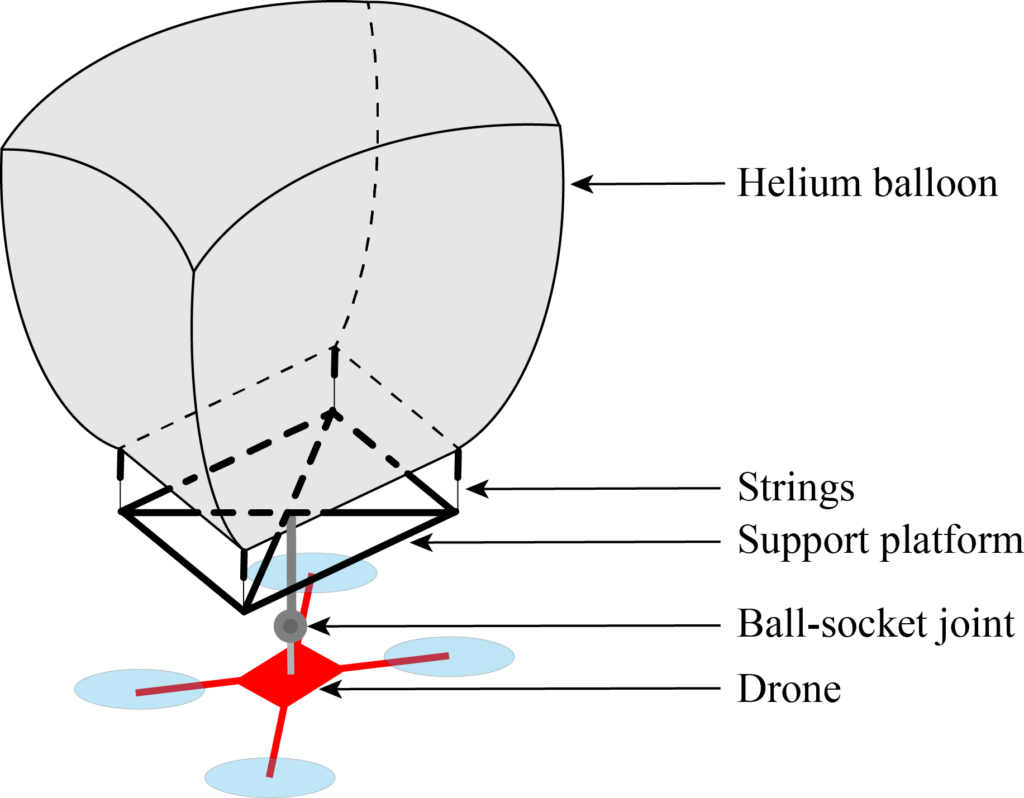
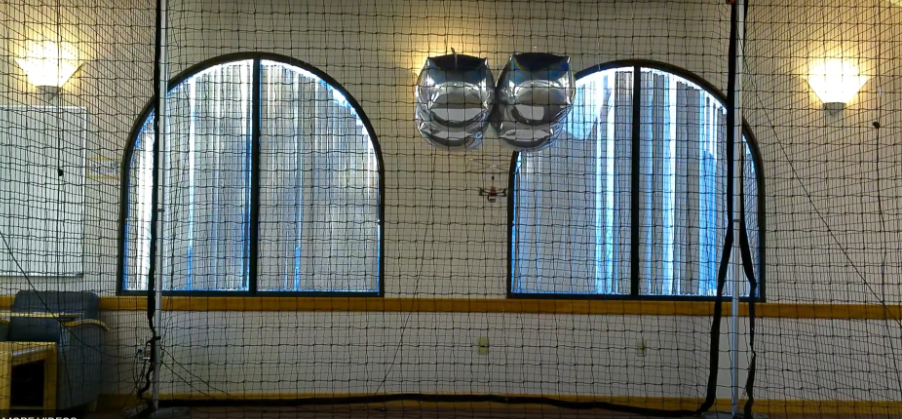
2019
Dr. Thomas L. Kieft, New Mexico Tech Biology Department
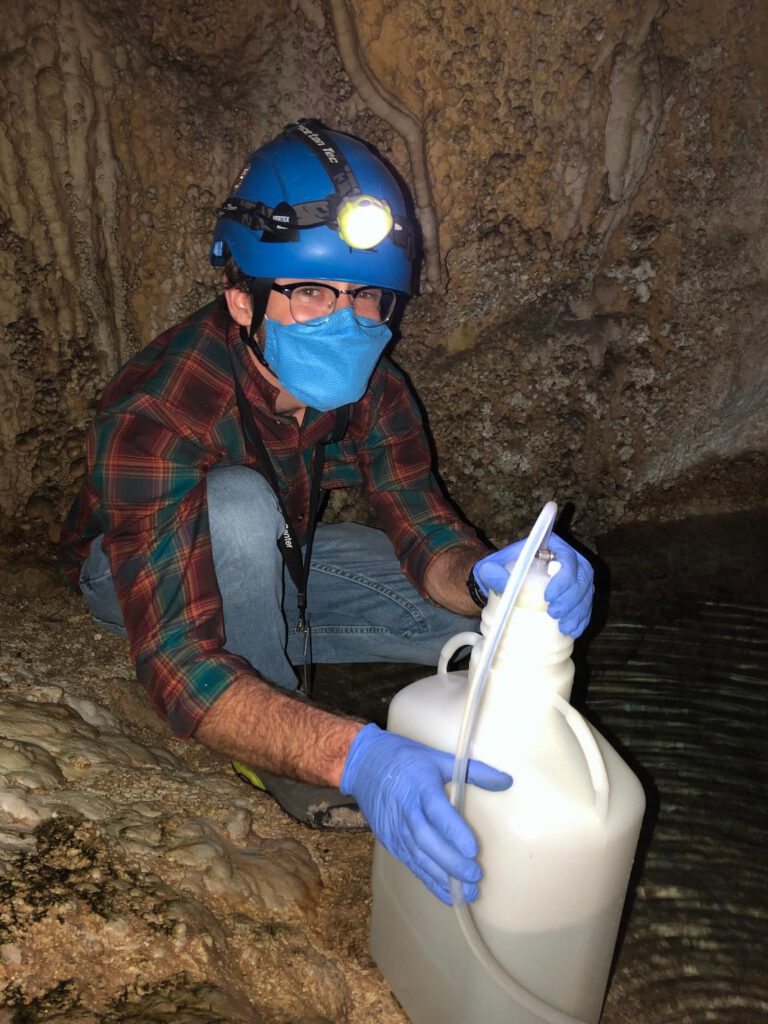
Culture-Independent High-Throughput Analysis of Viral Communities in Carlsbad Cavern Pools
The biology of caves has received considerable attention from the scientific community, particularly with regard to cave microorganisms and animals. However, very few cave studies have focused on viruses, which are the most common biological entities on Earth. Viruses that infect bacteria (bacteriophages) are likely to be the most numerous in caves. Characterization of the viruses in caves will increase our knowledge of cave biodiversity and will also further our understanding of nutrient cycling. Viruses lyse host cells, thereby releasing nutrients for uptake by other cells. The objectives of this study are (1) to quantify viral particles in cavern pools relative to prokaryotic cells, (2) to generate a large database of cavern pool viral sequences, and (3) to test for human impacts on cavern pools as evidenced by the viral communities. Hypotheses to be tested are that (1) viral abundance is ten-fold higher than prokaryotic cell abundance in cavern pools, (2) cavern pools contain novel viral sequences, and (3) viral communities in pools from developed portions of a cave are distinct from those of pools in undeveloped parts of the same cave. It is proposed here to sample water from cavern pools in a karstic system. Samples will be collected from pools near tourist paths and away from tourist traffic to test for human impacts on the viral genomes (viromes). Viruses will be concentrated from cavern pool water, and then DNA will be extracted at New Mexico Tech. The DNA will then be sequenced, followed by bioinformatic analysis. Bacteria will also be quantified in the cavern pools. Students will be engaged in all aspects of the research. Outreach activities will include K-12 lectures and posters on cave microbiology.
Dr. Talon Newton and Scott Christenson, New Mexico Bureau of Geology and Mineral Resources
Estimating the Local Water Balance in Snowy River Passage, Fort Stanton Cave, New Mexico
The proposed study aims to increase our understanding of the hydrogeology of Fort Stanton Cave by assessing the local water balance for a flood event in Snowy River Passage. Since the discovery of Snowy River Passage in 2001, Fort Stanton Cave, located in southern New Mexico, has become a world-class cave. There are many exceptional aspects of Snowy River, including the white calcite formation that lines the stream bed along most of the known length of the passage, making it the longest speleothem in the world. Over the last twenty years, cave explorers and researchers have been collecting geologic, hydrologic and geochemical data, with the objective of identifying the water source(s) associated with several ephemeral floods that have been observed in Snowy River Passage. Recently, researchers from New Mexico Tech, University of New Mexico, and the US Geological Survey have constructed a preliminary hydrogeologic conceptual model of Snowy River based on existing data sets. According to this model, Eagle Creek is the primary source of water that periodically floods Snowy River Passage. During times of high stream discharge in Eagle Creek, enough water infiltrates through the streambed sediments to initiate flooding in the passage. Much of this water ends up discharging at Government Spring and flows into the Rio Bonito. Water in the Snowy River stream is also lost to downward leakage and evaporation.
The main objective of this study is to examine hydrogeologic processes in Snowy River Passage by analysis of individual flood events. For a specific flood event, we will measure:
- The volume of water that infiltrates downward through the Snowy River streambed
- The volume of water that evaporates from the Snowy River stream
- The volume of water that discharges at Government Spring
These measurements will allow the calculation of the volume of water that infiltrated from Eagle Creek to initiate flooding in Snowy River Passage. These water balance calculations will help to test our current conceptual model and constrain a two-dimensional hydrologic flow model that is being developed.
Another objective of this study is to build a pan evaporimeter that records continuous data in the cave to accurately estimate evaporation rates in high-humidity caves. This instrument will be a useful tool to study microclimates in other caves in arid regions, presenting opportunities for future collaborative projects.
